Philips PUS8959, also known by other designations under the PUS89 abbreviation (depending on the sales network), is a model from the popular series The One. Its biggest distinguishing feature is the Ambilight system, which still makes a great impression. The three-sided backlighting adapts to the picture on the screen, making movies, series, or games literally extend beyond the edges of the TV. The One is also a good option for gamers. The 120 Hz panel and low input lag ensure that games run smoothly, and the motion on the screen is clear. On the console, we tested several dynamic titles, and the TV handled them without any problems – no stutters or delays. Additionally, HGiG support allows for better reproduction of HDR effects in games. This is a great solution if we care about the image matching what the creators intended. The picture quality is at a good level, especially during the day. With a brightness of 550 nits, The One performs well even in well-lit rooms, and Dolby Vision in HDR films delivers vivid colors and sharp details. However, the ADS panel has its limitations – the blacks in dark scenes resemble a gray shade more, which can be noticeable when watching in a dimly lit room. When we watched movies with the lights off, the lack of depth in the blacks was somewhat evident. The Titan OS operating system is something that still needs refinement. It is fast, but the limited number of applications, such as the lack of Spotify or TVN Player, can be frustrating for those used to more advanced platforms like GoogleTV. When daily using Netflix or YouTube, it works flawlessly, but if we expect more advanced features, the system may not meet expectations. Overall, Philips The One is a good choice in its price category. The Ambilight system impresses and significantly enhances the viewing experience, especially in the evening. It is also a solid option for gamers, thanks to smooth image and low input lag. Although the blacks are not perfect and the operating system needs refinement, the TV performs well in everyday use. For fans of unique solutions like Ambilight, this is a proposition that definitely deserves attention.
- Matching (Score)
- Our verdict
- TV appearance
- Where to buy
- Contrast and black detail
- HDR effect quality
- Factory color reproduction
- Color reproduction after calibration
- Smoothness of tonal transitions
- Image scaling and smoothness of tonal transitions
- Blur and motion smoothness
- Console compatibility and gaming features
- Input lag
- Compatibility with PC
- Viewing angles
- TV efficiency during daytime
- Details about the matrix
- TV features
- Apps
- Playing files from USB
- Sound
Philips The One (PUS8959 / PUS8919 / PUS8909 / PUS8949 vs Philips PUS8500
Direct compare
Check the best price offer:
Philips The One (PUS8959 / PUS8919 / PUS8909 / PUS8949PUS8959 / PUS8919 / The One / PUS8909 / PUS8949
PUS8500 / PUS8560 / PUS8510 / PUS8600

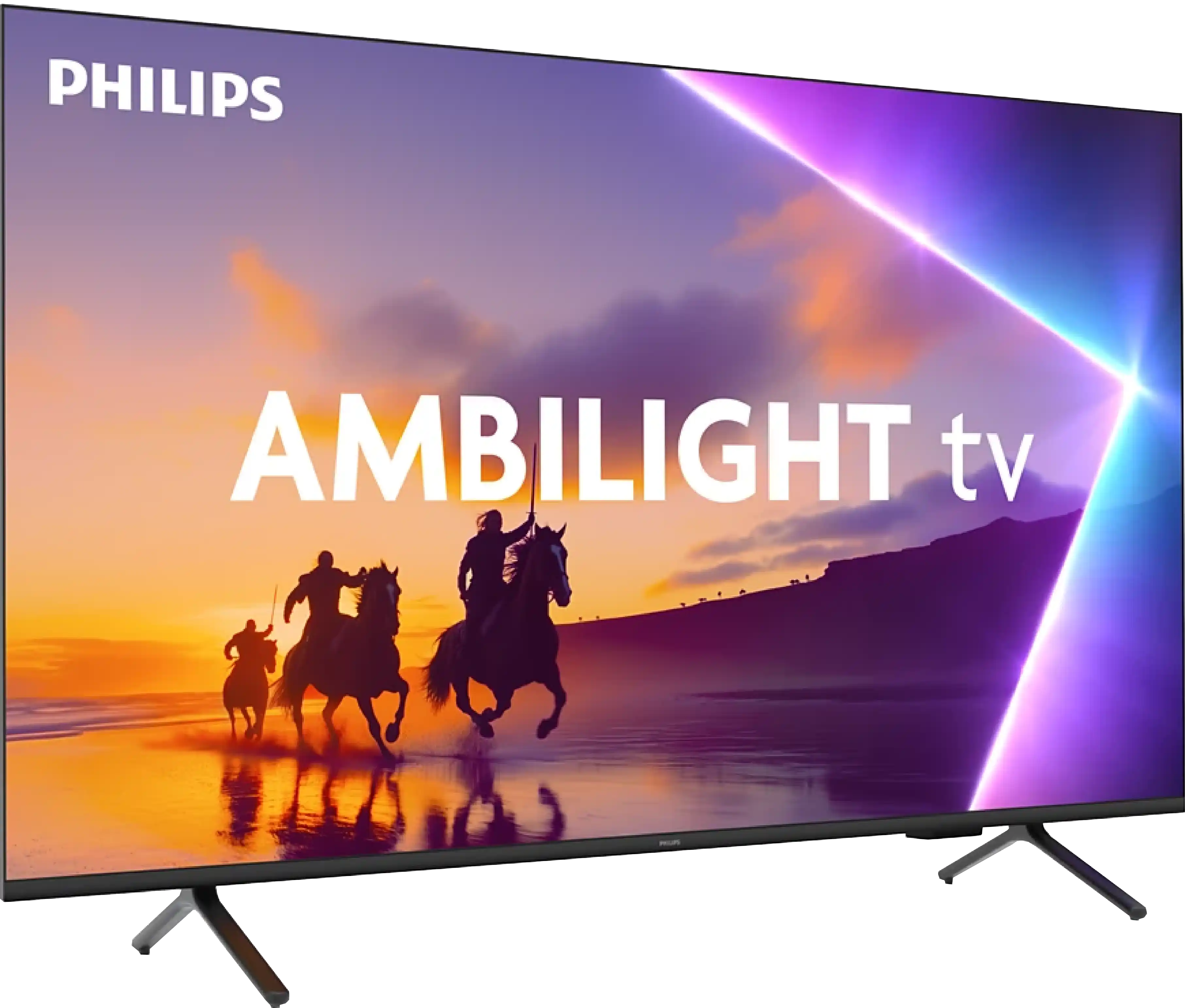
Panel type: LCD IPS
Resolution: 3840x2160
System: Titan OS
Model year: 2024
Complete the survey to find out the result

Panel type: LCD VA
Resolution: 3840x2160
System: Titan OS
Model year: 2025
Complete the survey to find out the result

Overall rating
6.8
5.6
Movies and series in UHD quality
6.6
5.6
Classic TV, YouTube
6.3
6.2
Sports broadcasts (TV and apps)
7.2
5.2
Gaming on console
8.5
6.7
TV as a computer monitor
8.0
5.6
Watching in bright light
6.1
4.9
Utility functions
6.0
4.8
Apps
6.2
4.6
Sound quality
6.4
6.2
Complete the survey to find out what fits your preferences
Advantages
Ambilight System: Triple-sided backlighting
120Hz Panel - smooth image
Additional features for gamers
Satisfactory level of brightness that works well during the day
Wide viewing angles
Ambilight TV System
High native contrast - VA panel
Low input lag
Basic features for gamers: ALLM and VRR
Full support for audio formats: Dolby Atmos and DTS
Backlit remote controler with numeric keypad
Disadvantages
Poor black quality
Annoying "hybrid" remote
Titan OS: Still in development, with a limited number of applications and not very functional compared to more advanced platforms
Average panel brightness
TitanOS system feels unfinished (some features do not work, gaps in applications)
Infrared remote control
Font readability issues (PC)
Our verdict
Ambilight because that's where we have to start, it's the biggest reason to buy the PUS8500. The three-sided backlighting of the TV looks great, especially in the evening. It creates an atmosphere, masks the imperfections of contrast, and makes the viewing experience simply more enjoyable. Even if the black levels aren't perfect, the native VA panel's high contrast is just fine. On top of that, there's really decent input lag and several gaming features like ALLM and VRR. Although there’s no HDMI 2.1 or 120Hz panel, casual gaming should be a pleasure. Especially since it's responsive and latency-free. Additionally, there’s full support for audio formats – both Dolby Atmos and DTS, so soundbar owners can rejoice too.
But let's not kid ourselves – this is still a budget TV, and at times it shows. Brightness is average – not weak enough to make viewing impossible, but if you hit a particularly sunny day, watching conditions without blinds can be problematic. However, in our opinion, the biggest disappointment with the PUS8560 is the operating system, Titan OS. Despite the system debuting some time ago, certain features simply wouldn't work – for example, screen mirroring from a phone despite the manufacturer's claims that such a feature is present here. There are fewer apps than with competitors, and the system itself runs a bit clumsily. Overall, it seems to have some capabilities, but clearly lacks refinement.
Of course, this is not a TV meant to compete with top models. But if someone is looking for something simple, with a nice atmosphere that the Ambilight system provides, it is a quite reasonable offer. You just need to know what to expect and accept the many compromises present here.
TV appearance




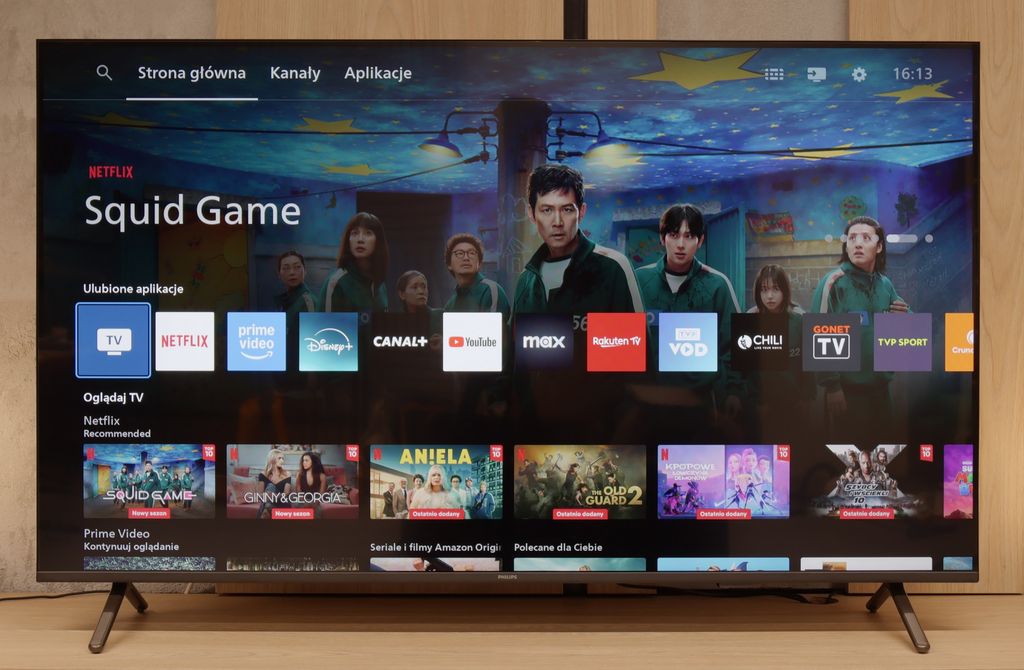
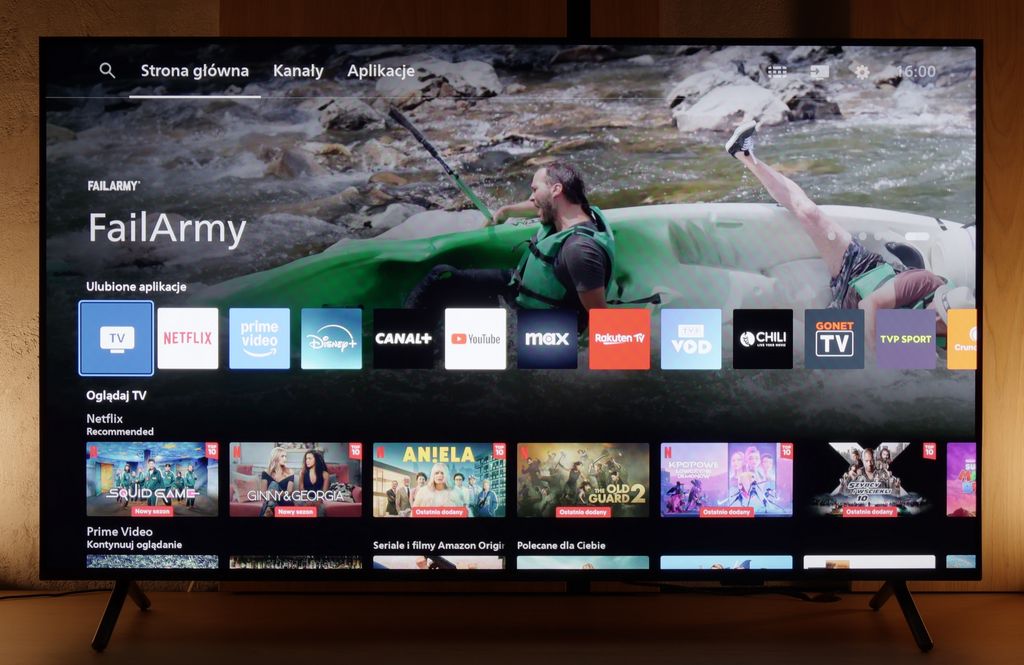
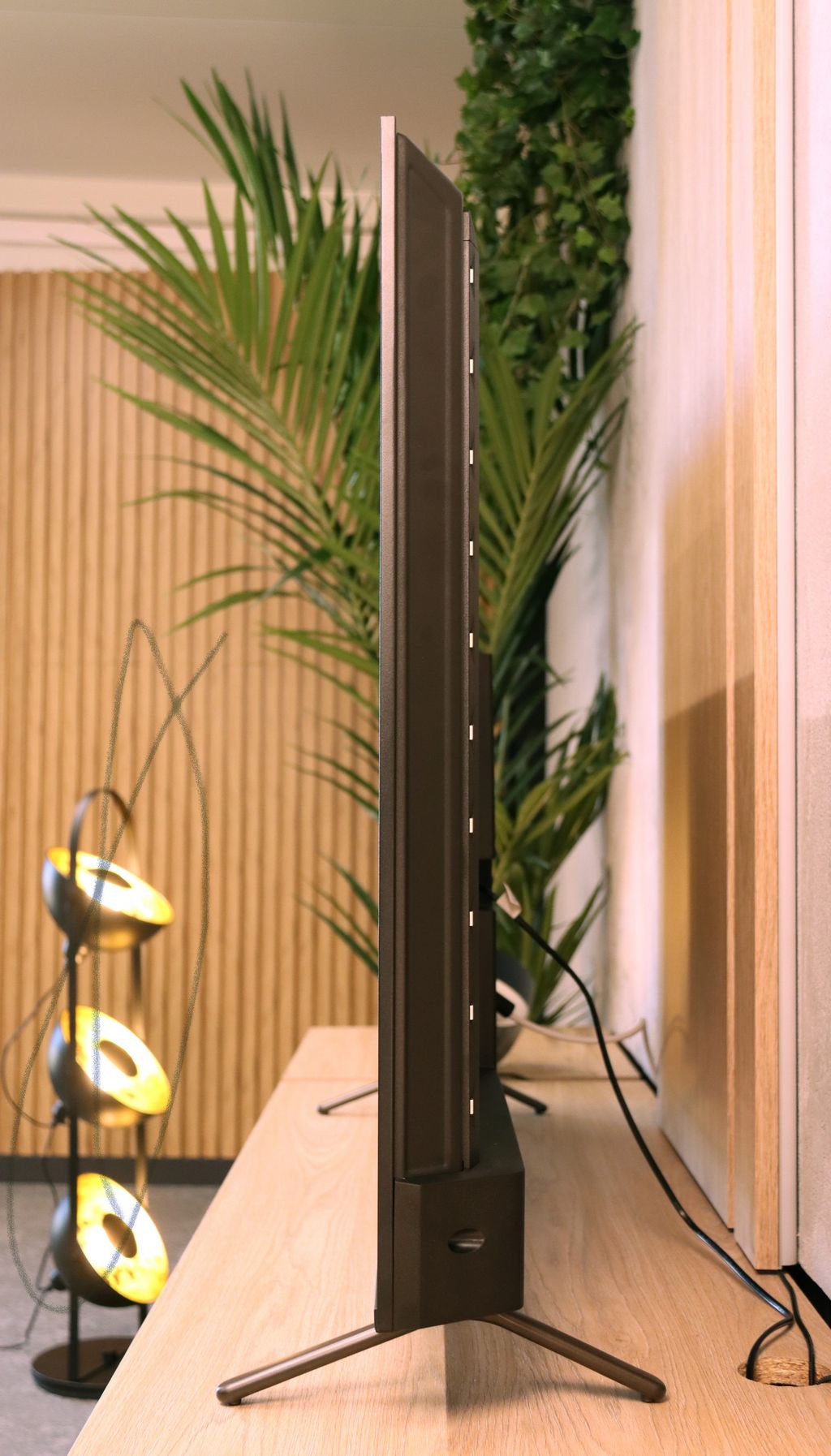
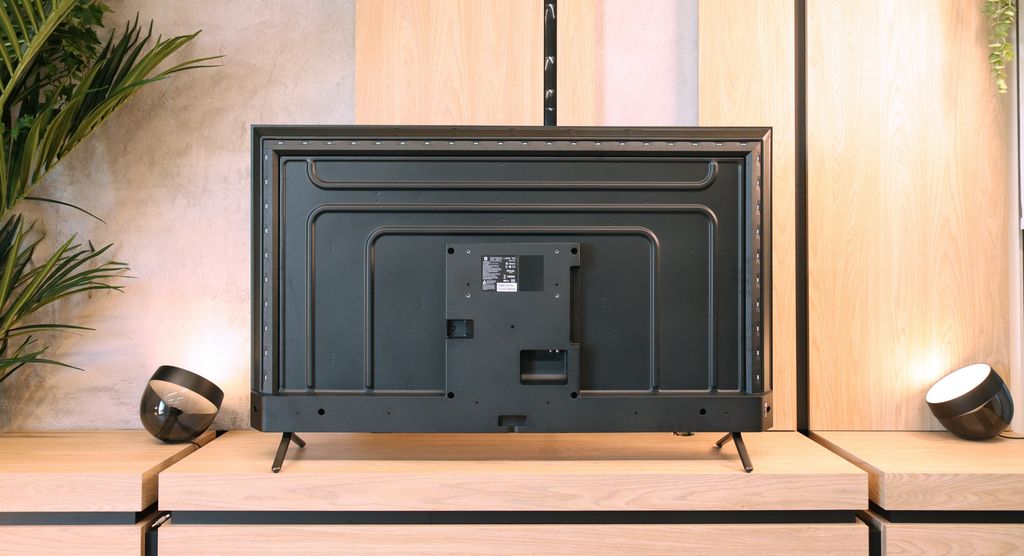
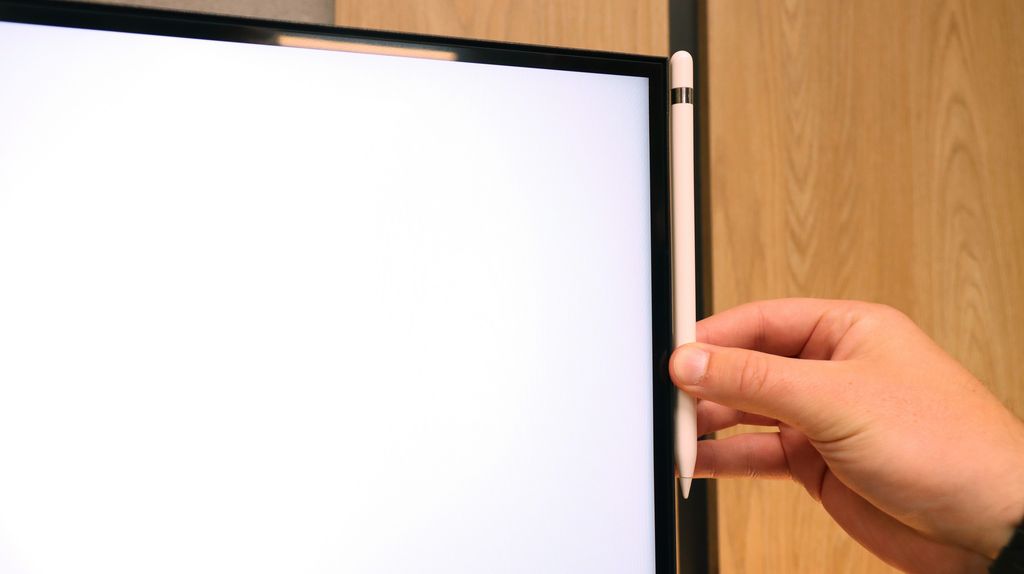
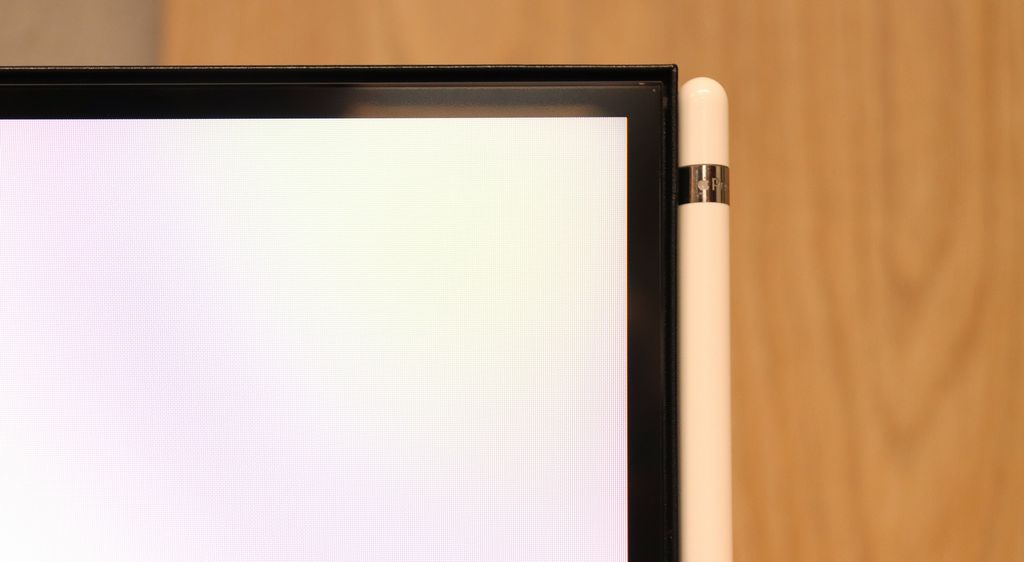

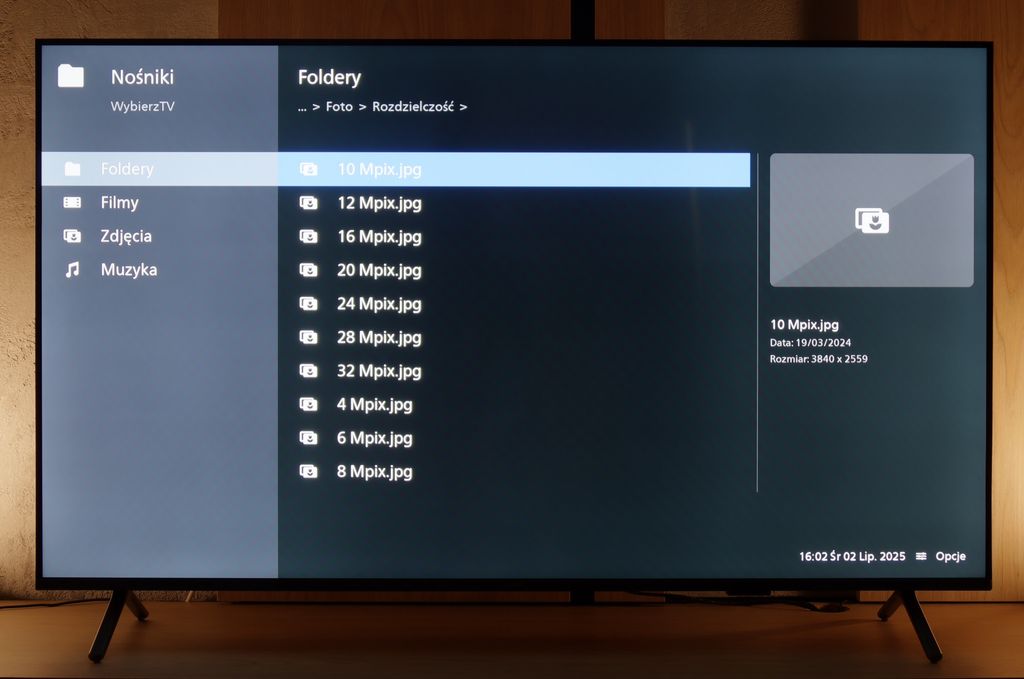
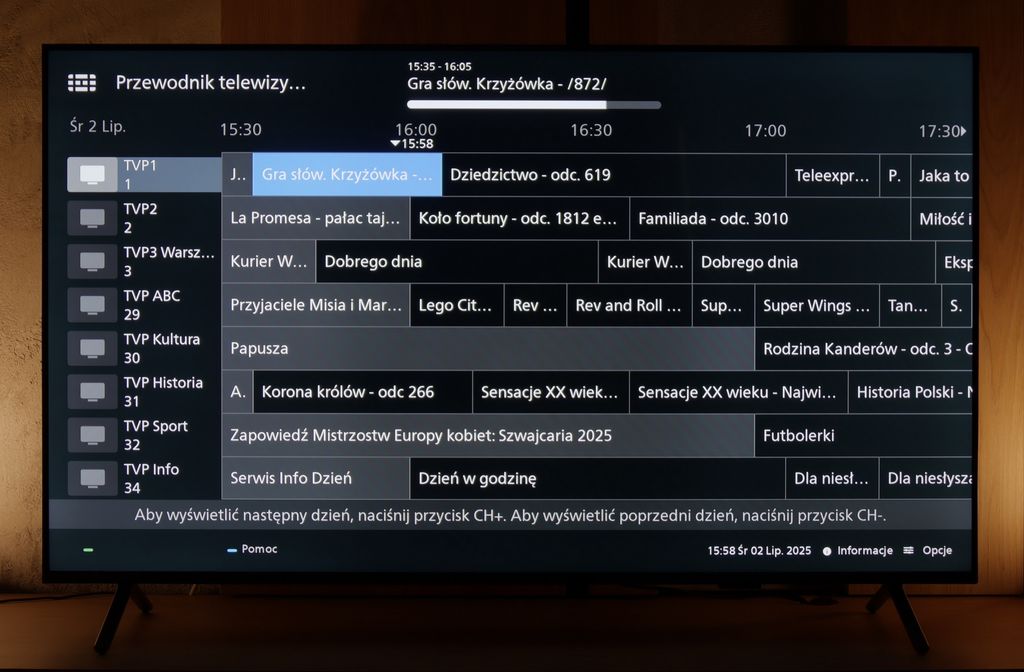
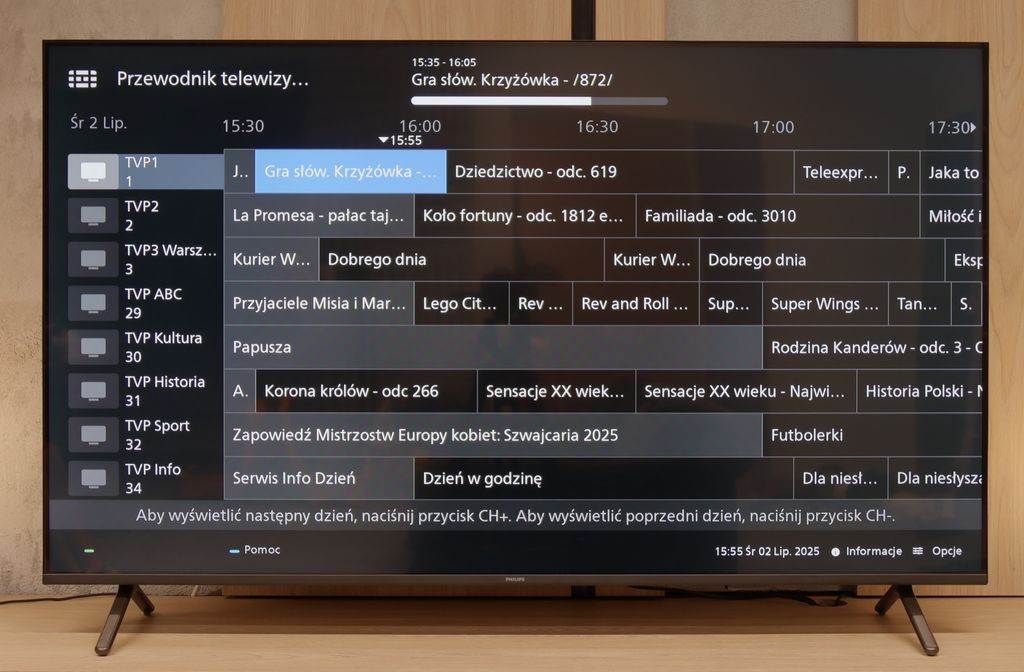
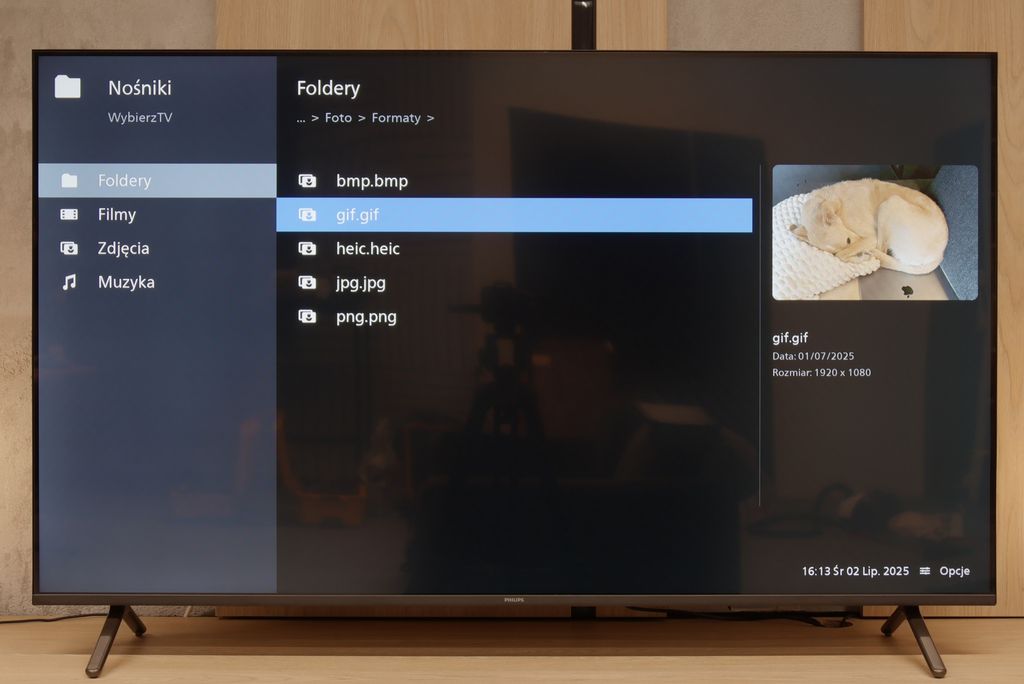
Where to buy
Contrast and black detail
4.3/10
6.1/10
Local dimming function: No
Local dimming function: No
Contrast:

Result
2,350:1

Result
2,400:1

Result
2,600:1

Result
2,550:1

Result
2,200:1

Result
6,000:1

Result
5,950:1

Result
6,250:1

Result
5,950:1

Result
5,750:1
Halo effect and black detail visibility:

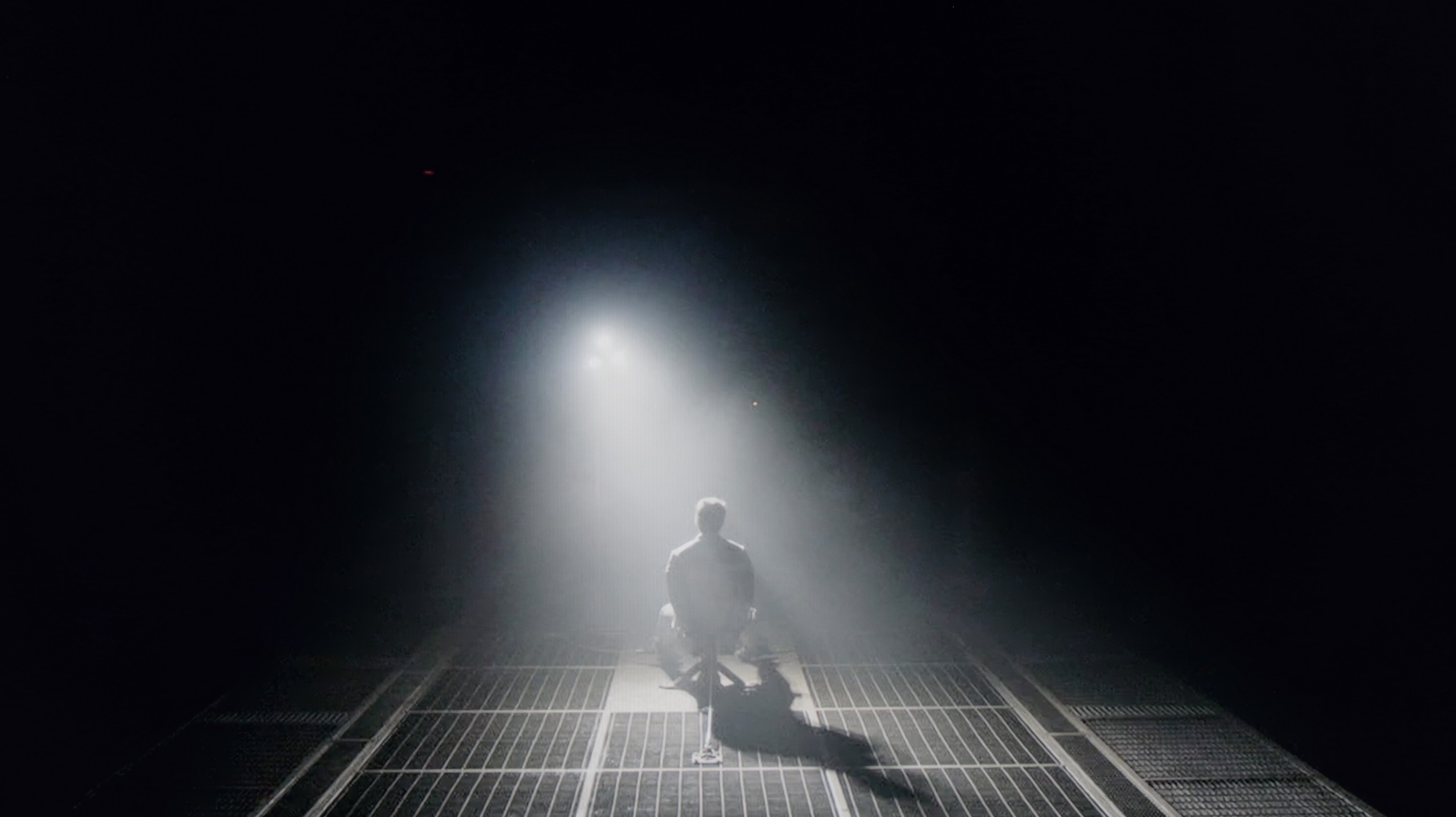
The television Philips PUS8959 is based on an ADS panel, which offers slightly different parameters compared to the popular VA panels. In the tested scenes, the contrast was around 2000:1, making the black level far from ideal. ADS panels are known for their weaker contrast compared to VA panels, which in practice means that instead of deep black, we see more navy or gray shades. However, the ADS panel is still better than the standard IPS panel, which cannot achieve such a level of contrast. Additionally, the Philips PUS8959 is not equipped with local dimming technology that could improve these parameters. The lack of this feature amplifies the effect of shallow black, particularly noticeable in dark scenes, like those in the movie "Sicario 2." Instead of intense black, the screen generates a silvery glow, which can be bothersome, especially when watching in darker conditions. All of this makes the visual experience lose depth, and details in dark scenes are not as well visible as one might expect from higher-class screens. Despite the lack of local dimming, the television is equipped with something called Global Dimming. The television is capable of completely dimming the panel to achieve higher contrast, but at the expense of details that may blend together, for example, lights in the test scene from the movie Oblivion. It is worth adding that the model we received for testing has quite large spots resulting from uneven backlighting, although this is not an exception, and one should take into account that we might also receive such a unit when purchasing.
The Philips PUS8560 in the size we tested is equipped with a VA panel. As a result, the black levels – for an LCD television – can be considered decent. And that is exactly the case with this model. Both the blacks and the overall contrast impression in the film scenes we tested are quite good – the image does not wash out, and details are visible even in more difficult sections.
But the panel alone is not everything. Unfortunately, the PUS8500 is not equipped with local dimming (which is a given looking at the TV segment), so one has to reckon with the fact that with completely turned-off lights, the black can resemble more shades of navy than true black. On the other hand – and here’s a plus for Philips – the Ambilight system does a great job. The backlighting makes a real impact on contrast perception. Thanks to this, even if the black technically isn't perfect, the subjective viewing experience becomes much more enjoyable. For many people, that’s enough for an evening screening to be truly impressive.
HDR effect quality
5.9/10
4.8/10
Luminance measurements in HDR:

Result
501 nit

Result
514 nit

Result
553 nit

Result
544 nit

Result
569 nit

Result
273 nit

Result
300 nit

Result
324 nit

Result
343 nit

Result
334 nit
Scene from the movie “Pan” (about 2800 nits)


Scene from the movie “Billy Lynn” (about 1100 nits)


Static HDR10


Dynamic: Dolby Vision
Dynamic: HDR10+


HDR luminance chart:
Philips PUS8500
Luminancja HDR
Luminance of RGB colors
Philips The One (PUS8959 / PUS8919 / PUS8909 / PUS8949
Luminancja HDR
Luminance of RGB colors
The luminance chart for Philips PUS8959 shows that the television can achieve around 550 nits of brightness, which can be considered a satisfactory level. This brightness allows the effects of HDR to be felt, particularly standing out in more demanding scenes. In the tested patterns, the television performed quite well, even in challenging sequences like those from "Sicario 2". Due to the lack of local dimming, the television does not dim small bright elements, and they shine with the full "power" of the television but at the cost of the silverish blacks we mentioned in the paragraph about blacks. It is also worth praising Philips PUS8959 for its good coverage of the DCI-P3 color palette, which amounts to around 94.5%. This makes the colors vivid and close to the creators' intentions, further enhancing the quality of HDR effects and the viewing experience of high dynamic range content.
When it comes to HDR performance on the PUS8560, one can confidently say that it is quite average. The brightness of the panel is around 350 nits, which we consider to be the absolute minimum for viewing content in this format. However, this is not a result that will impress viewers looking for the best possible image.
On the plus side, it is worth noting that the PUS8500 series – including the PUS8560/12 we tested – is marketed as a QLED television. And indeed, we can expect a wider color gamut here. This model is equipped with an additional filter (PFS), and the coverage of the DCI-P3 color space at around 90% should be sufficient for the majority of users. This filter works very similarly to quantum dots. As a result, the colors are quite well saturated. It’s not an outstanding result, but perfectly adequate for watching movies and series on streaming platforms.
Factory color reproduction
4.1/10
6.2/10


Factory Mode
After calibration

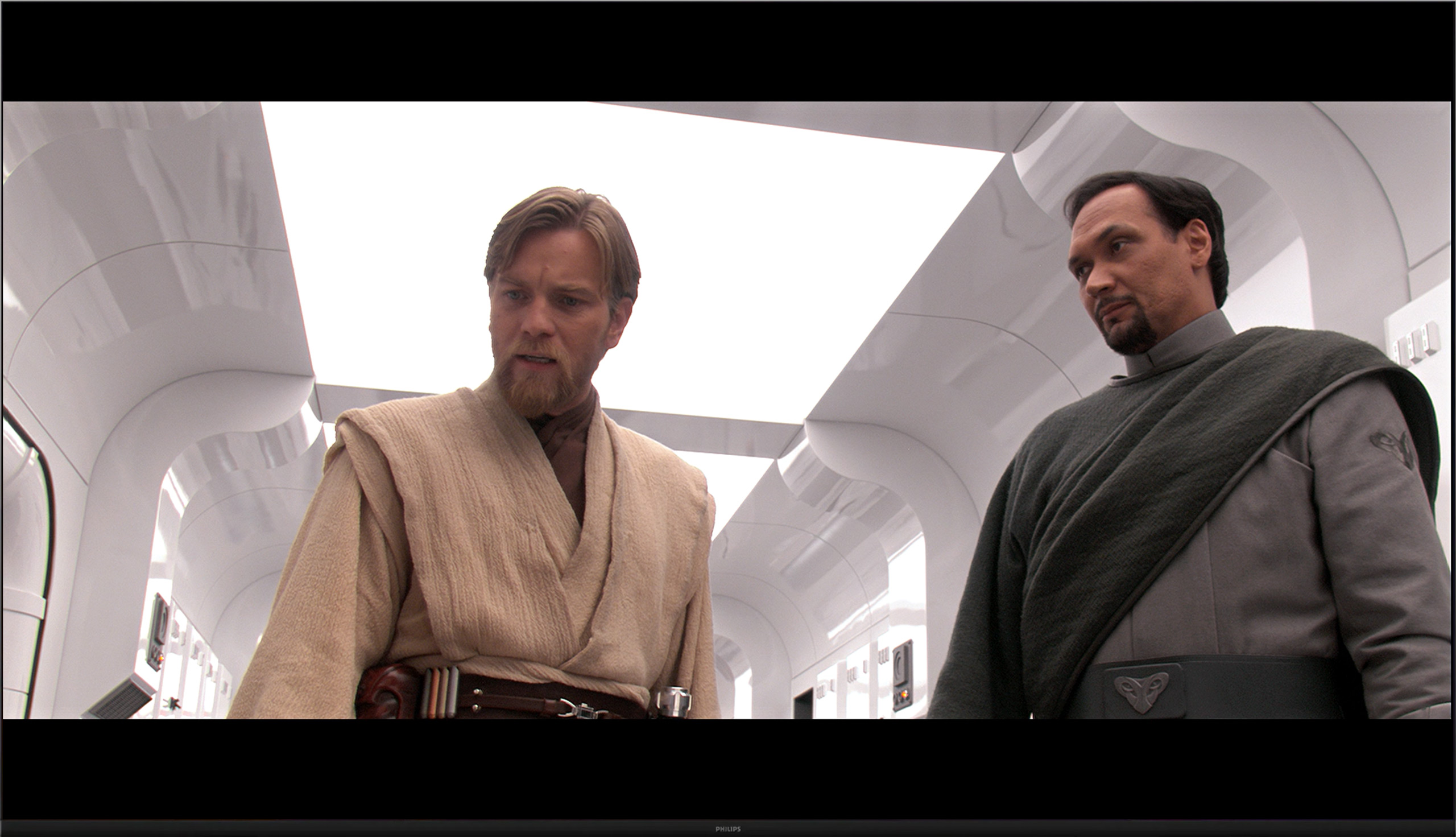
Factory Mode
After calibration
The Philips PUS8959 television was tested in the best, theoretically most precise picture mode – Filmmaker. Although the name suggests cinematic quality, it unfortunately falls far short of the ideal. The biggest issue in this mode is white balance, both in HD and 4K content. It is characterized by a significant dominance of the red color and dips in the green level, resulting in an unnatural color reproduction. For example, white elements of the image have a distinctly pinkish hue, and the green is less intense, causing the overall image to lose its naturalness and color balance. The ColorChecker test confirms these errors – it is clearly visible how the color samples "deviate" from the correct values, which can be best observed on the sample squares that should accurately reproduce colors. The lack of accuracy in this regard affects the realism and fidelity of the image, which is particularly undesirable in Filmmaker mode.
Regarding brightness characteristics, the gamma chart resembles a real roller coaster – with small elements displayed on the screen, the brightness is excessive, causing details to become overly highlighted. Meanwhile, at higher gamma values, the image loses contrast and becomes too dark, making the overall appearance look less dynamic. Similar issues can be noticed in the EOTF characteristics – the television is unable to correctly reproduce the brightness level, negatively affecting the overall image quality.
We tested the TV on the best available factory settings, which is in Film/Filmmaker mode – this is the mode we recommend for everyday viewing. Unfortunately, it is not without its flaws. Both in HD and HDR content, the image had a clear tendency to appear pinkish, caused by too much red and blue in the white balance. Another problem turned out to be excessive brightness of the image, which was confirmed by both the gamma chart and the EOTF curve. This characteristic was responsible for the loss of detail and washed-out colors in more challenging HDR scenes, as we mentioned earlier. Overall, this led to quite significant color reproduction errors – in extreme cases, the delta E value exceeded 7, while the threshold of visible errors for the human eye is about 3. This situation can be improved through calibration, and you can read about its effects below.
Color reproduction after calibration
8.1/10
8.4/10

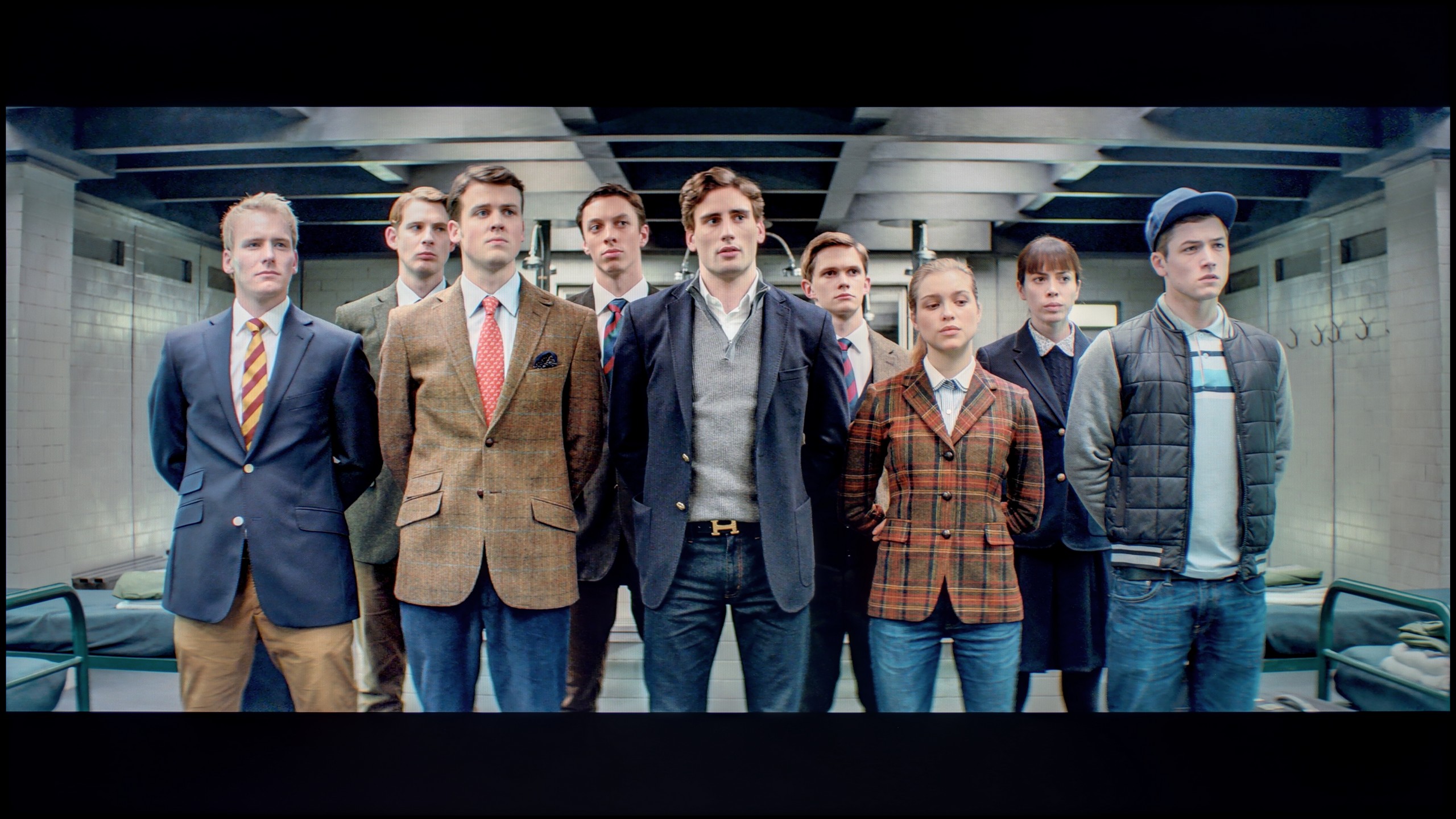


After calibration, the Philips PUS8959 television shows a significant improvement in color reproduction, especially in HD content. The white balance is exceptionally even, and the Delta E error values are below 1, which can be considered an outstanding result. Additionally, the gamma, which is responsible for brightness in lower-quality materials, performs very well, maintaining a stable level at 2.4, leading to an appropriate balance between bright and dark areas of the image.
Regarding 4K HDR materials, a significant improvement is also noticeable. The white balance, although not as perfect as in HD content, no longer shows issues with excessive red exposure, making the image appear more natural and harmonious. Unfortunately, in the EOTF characteristics, it is difficult to speak of any significant improvement, due to the design limitations of the television that prevent significant enhancement in this aspect.
Nevertheless, the overall performance is much better after calibration, making the Philips PUS8959 one of those televisions where it is truly worth spending time on precise calibration to achieve satisfactory image quality.
The Dutch manufacturer offers quite a large dose of settings in their products, so as usual, we decided to dig a little into them. The effects are immediately visible – we managed to correct the white balance, which made the image stop appearing excessively pink. The brightness characteristics were also partially balanced, of course, within the limits that the television itself allows. The image is no longer overly vibrant, and the overall reception after calibration is definitely better than in the factory settings of the Filmmaker mode.
One could only criticize the characteristics of the EOTF curve, which still indicates that the image tends to lighten materials in HDR format. Despite our efforts, the darkest parts of scenes can still be too bright, and the brightest do not always reach their full contrast potential. However, it must be clearly stated that we are dealing with a typically budget construction – you cannot expect reference-quality reproduction of HDR content from it.
Calibration definitely helped this model – it improved the balance, toned down the aggressive color scheme, and brought the image closer to what one might expect from a well-configured movie mode. However, there are certain limitations that cannot be overlooked.
Smoothness of tonal transitions
8.9/10
6.3/10



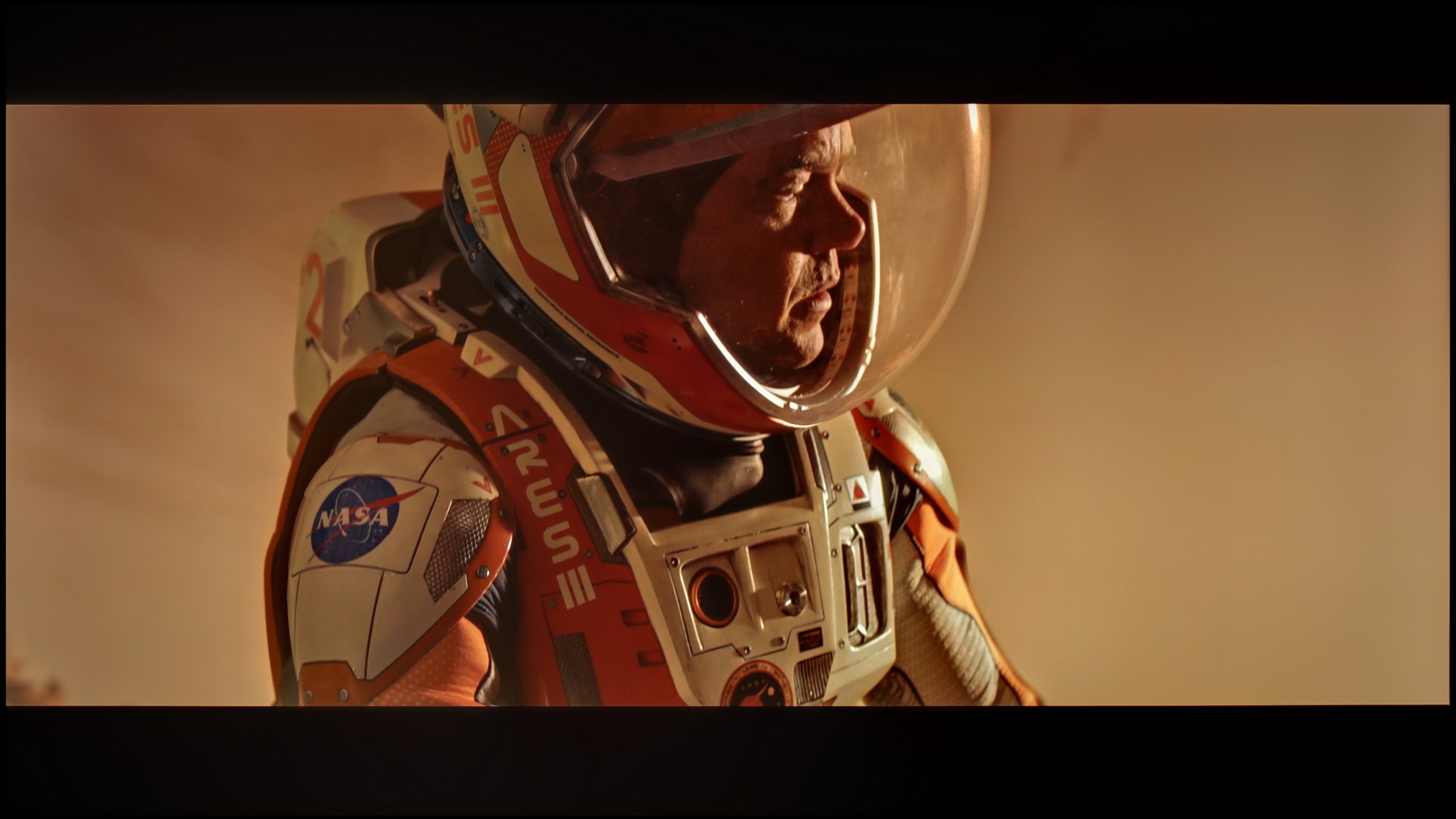

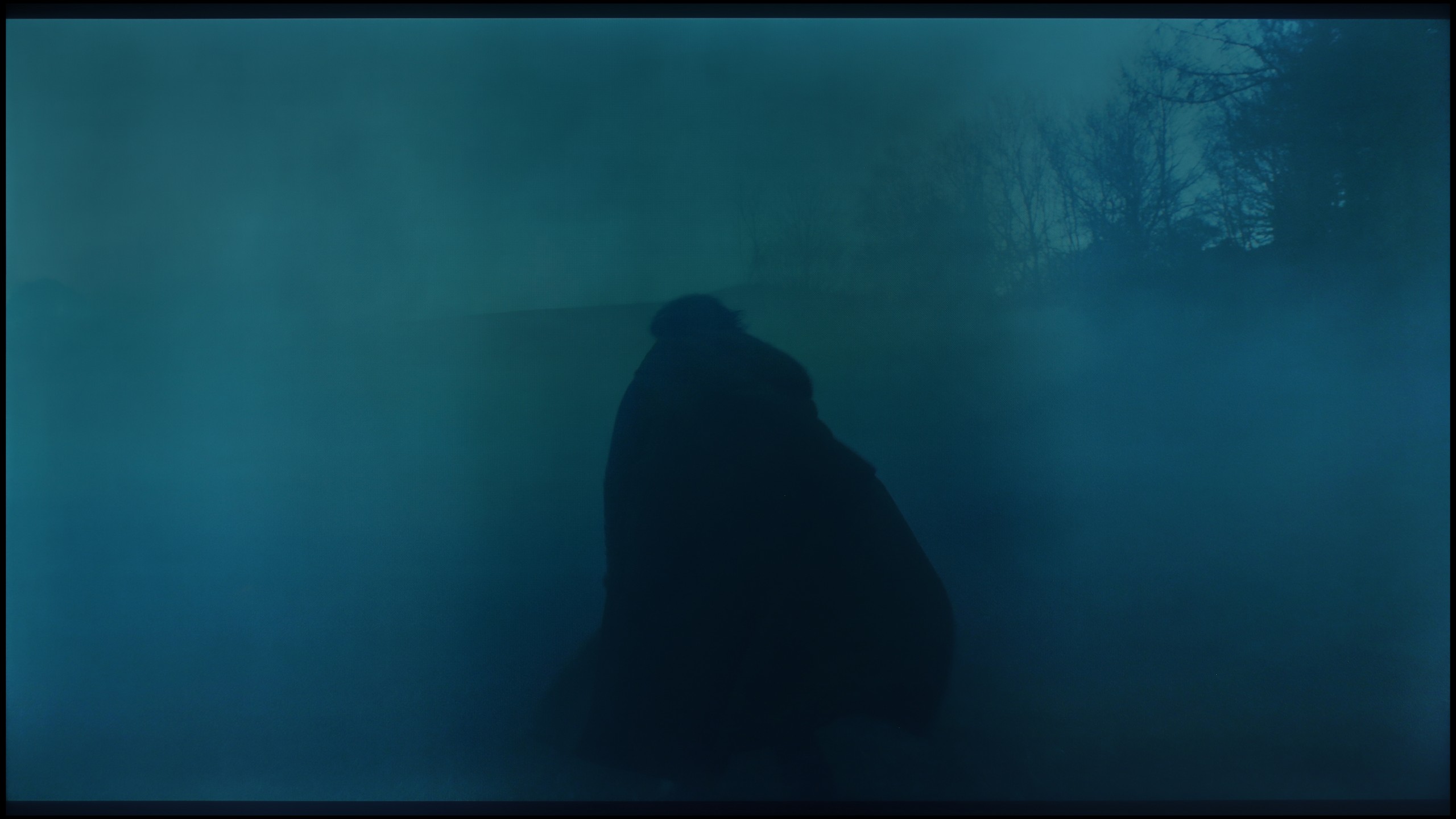

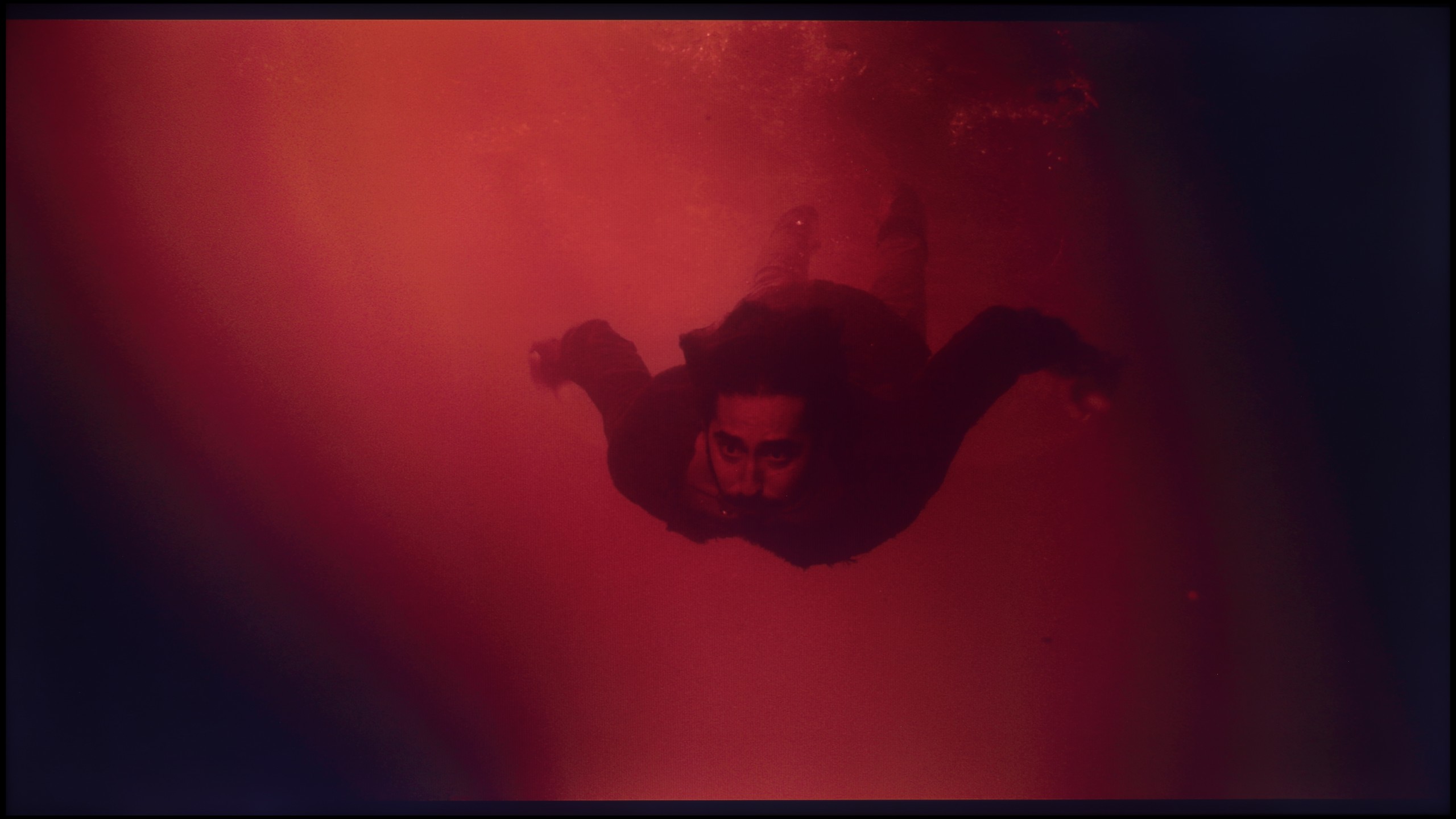




The gradation on the Philips PUS8959 television looks very good, offering smooth tonal transitions in most scenes. Occasionally, minor issues can be noticed, especially during transitions between certain colors, where subtle unevenness is apparent. However, these imperfections are subtle enough that they do not significantly impact the overall viewing experience and can be considered completely acceptable. In everyday use, the television provides sufficiently good gradation quality to satisfy even more demanding users, maintaining the naturalness of the image and avoiding glaring tonal distortions.
The PUS8560 handles color blending into smooth gradients very well. During testing, the image appeared cohesive and natural, with more serious issues with tonal transitions occurring only in very dark scenes – for example, in a shot with red water, where subtle cuts between colors could be seen. However, these are rather exceptions that do not spoil the reception of most content. It is worth mentioning another phenomenon that has a greater impact on image quality – the so-called dithering, or slight "sparkling" visible on solid backgrounds. This effect can be particularly noticeable in high-quality materials and may slightly detract from the impression of image clarity. It is for this flaw that we deducted some points in the rating.
Image scaling and smoothness of tonal transitions
6.5/10
6.1/10
Smooth transition function

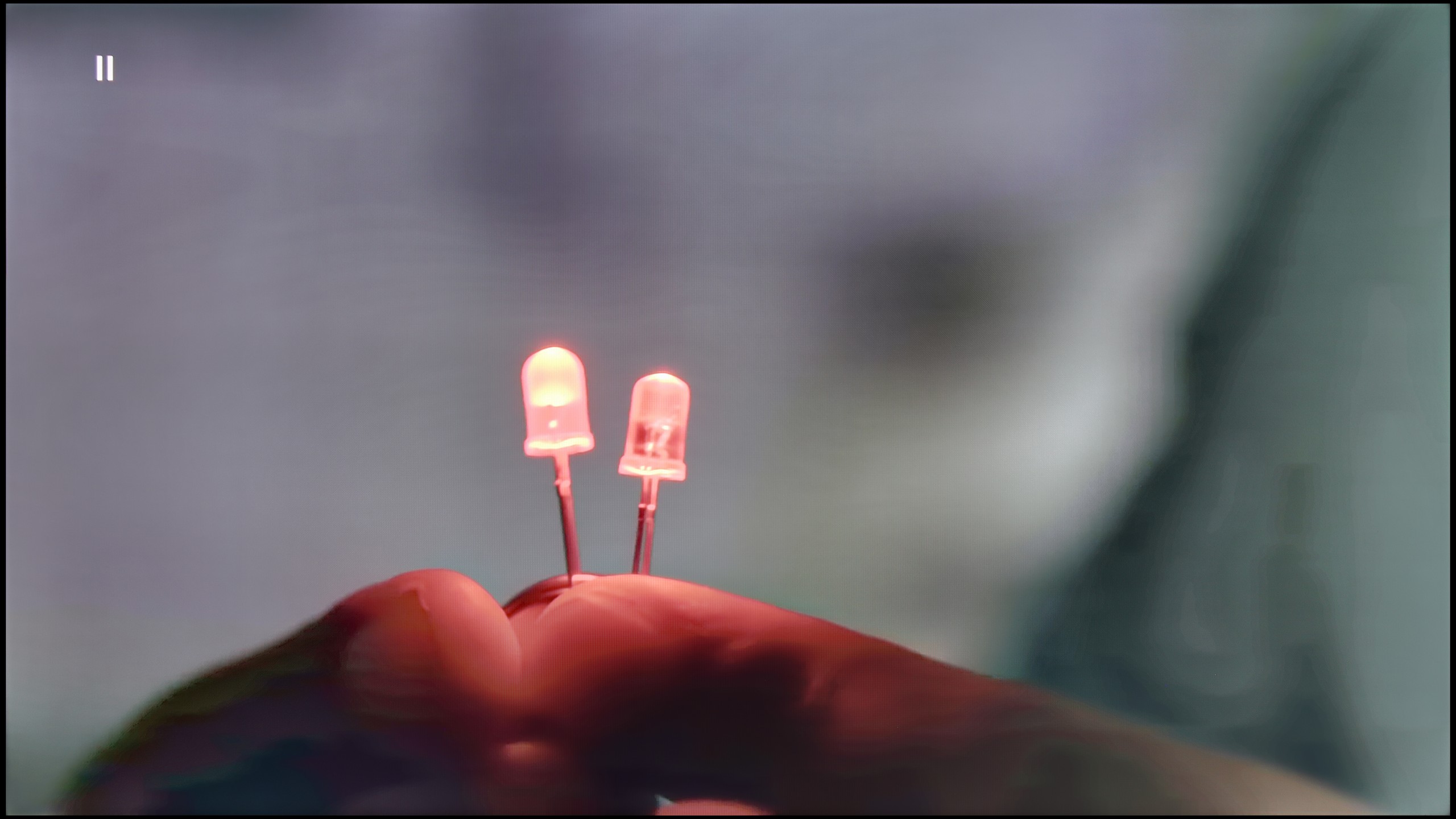
Image without overscan on the SD signal


When it comes to smoothing tonal transitions, the "Distortion Reduction" function at the minimal setting performs quite well, effectively smoothing tonal transitions without excessive influence on other elements of the image. In tests, I did not notice that the reduction negatively affected the image structure, such as film grain or object details – everything remains in place, which is a big plus for users who appreciate the natural look of film materials.
On the other hand, regarding digital processing, the image looks quite good, although it is characterized by very softened contours, giving it an almost "misty" quality. This effect can evoke mixed feelings – some users may enjoy the fluidity and delicacy of this type of presentation, while others may find it too gentle, losing detail. It is a matter of individual preferences, but it must be admitted that the Philips PUS8959 provides quite subtle yet effective tools for improving tonal transitions without excessive interference in the natural character of the image.
Philips PUS8560 offers a feature that reduces posterization, hidden under the name "distortion reduction." And while it indeed serves its purpose by smoothing problematic tonal transitions, it operates a bit too broadly. In practice, it affects not only colorful gradients but also softens faces, clothing textures, and furniture surfaces. This decreases the authenticity of the image—especially in films where natural texture is of great importance. However, if someone is looking for smoothing at all costs, it's best to set this option to "Low." For cinema image enthusiasts—definitely not recommended.
On the plus side, the quality of upscaling older materials should be noted—the PUS8560 model handles them surprisingly well. The image maintains a natural softness without artificially enhanced sharpness. It is also worth mentioning that the television correctly displays very low-resolution content, avoiding problems with cropping the edges of the image (so-called overscan).
Blur and motion smoothness
8/10
4/10


Blur (native resolution, maximum refresh rate):




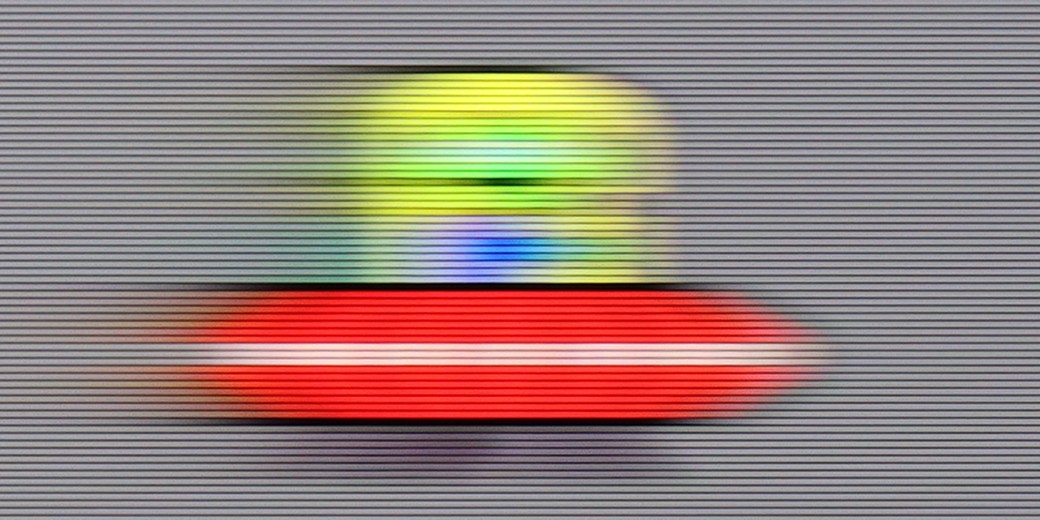
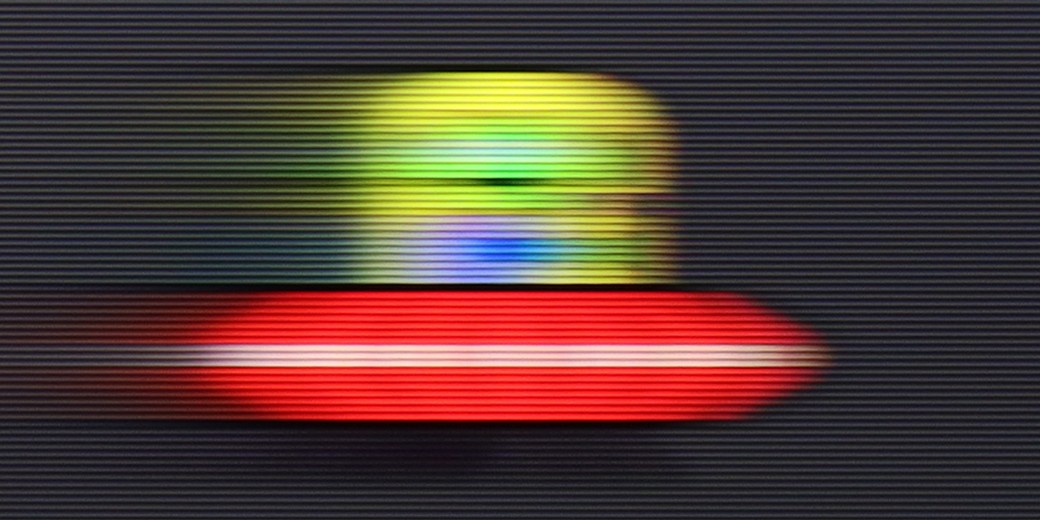
Philips TV PUS8959 is equipped with a 120 Hz panel, which should satisfy more demanding users, especially those who love watching dynamic sports broadcasts or playing games. Such a high refresh rate allows for a significantly smoother image, being a key aspect during dynamic scenes and fast actions.
For those who prefer watching movies, the TV offers an additional motion smoother that allows adjusting the frame rate of the film according to personal preferences. The Philips PUS8959 has a 10-step adjustment for the functions called "Smoothness" and "Motion Blur Reduction." The "Smoothness" function is responsible for increasing the number of frames through interpolation, making motion on the screen smoother, resembling the effect of so-called "soap opera." Meanwhile, "Motion Blur Reduction" focuses on minimizing blurring and improving motion sharpness, which is particularly noticeable in dynamic sequences, such as action scenes or fast sports shots.
The Philips PUS8560 is a television equipped with a 60 Hz refresh rate panel, which already limits its capabilities for displaying dynamic content. Watching sports or playing on a console is not one of the most enjoyable experiences. The situation is further worsened by the lack of any option to improve the smoothness of films. In the menu, we won't find settings that would allow for the activation of a motion smoother or even a slight motion smoothing in films recorded at 24 frames per second. You can imagine the effect. The picture may look jerky, especially in shots with panoramic camera movements.
Console compatibility and gaming features
9.8/10
4.7/10
- ALLM
- VRR
- VRR range48 - 144Hz48 - 60Hz
- Dolby Vision Game Mode
- Correct implementation of HGIG
- 1080p@120Hz
- 1440p@120Hz
- 4K@120Hz
- Game bar

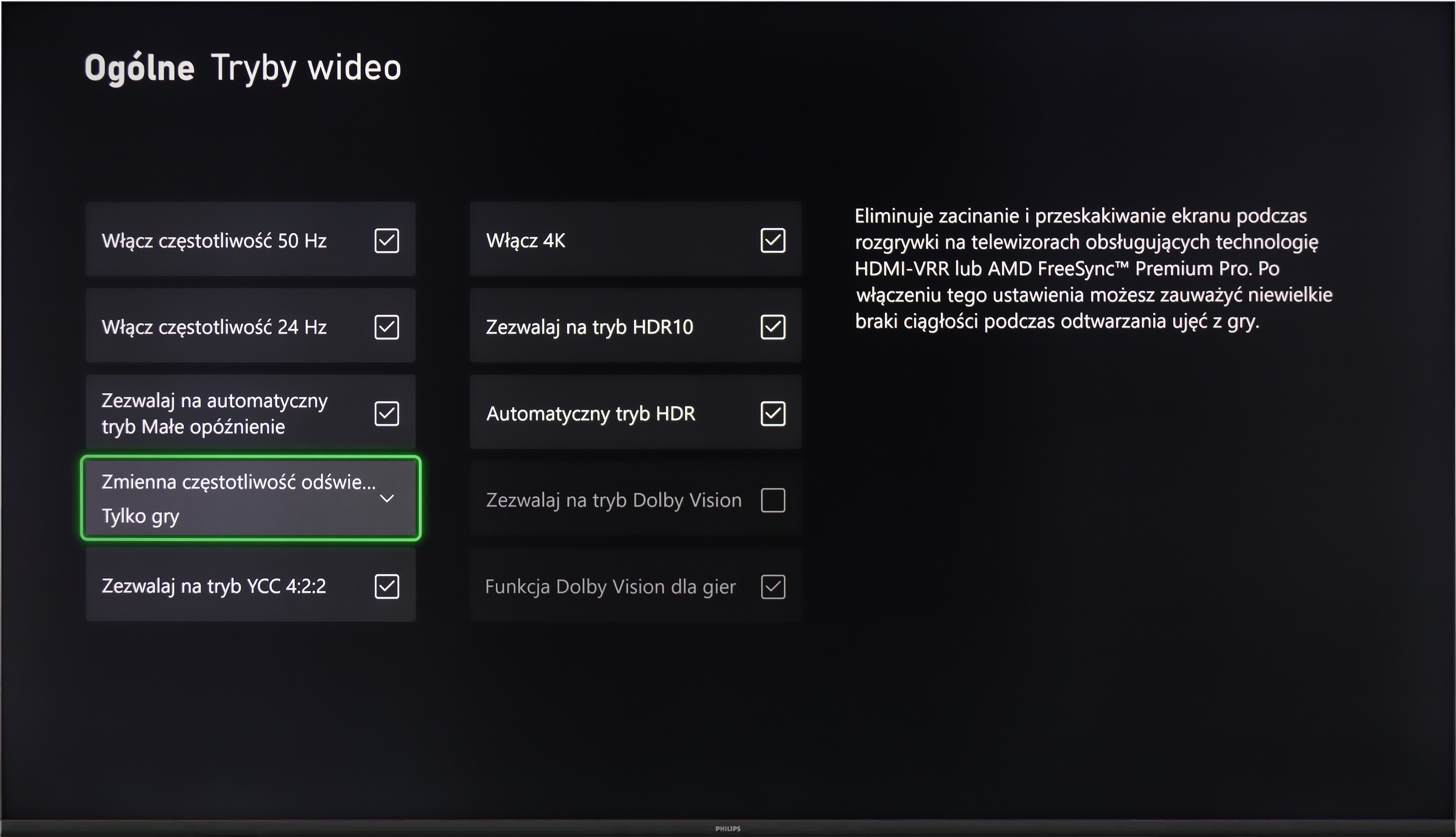

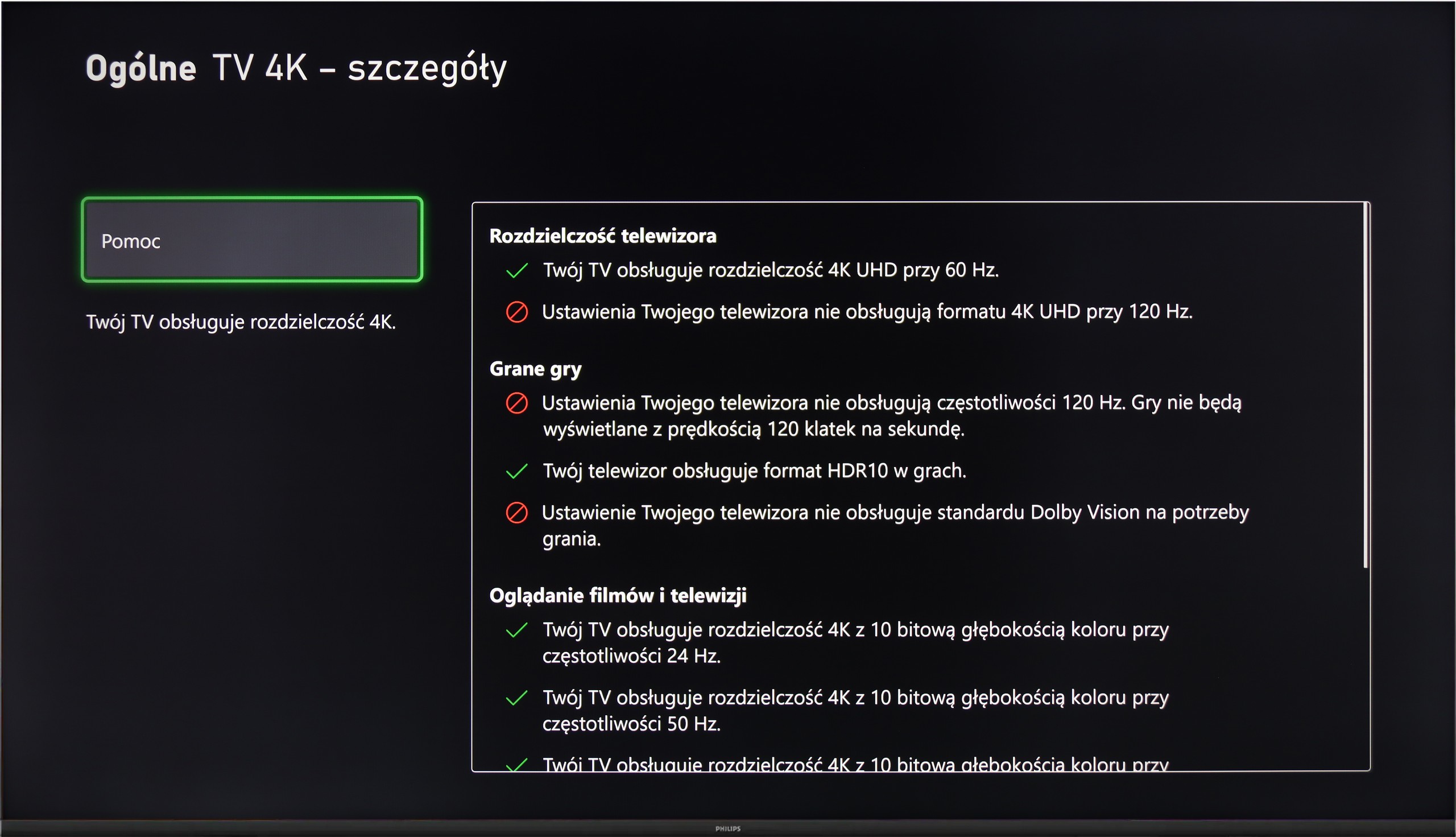

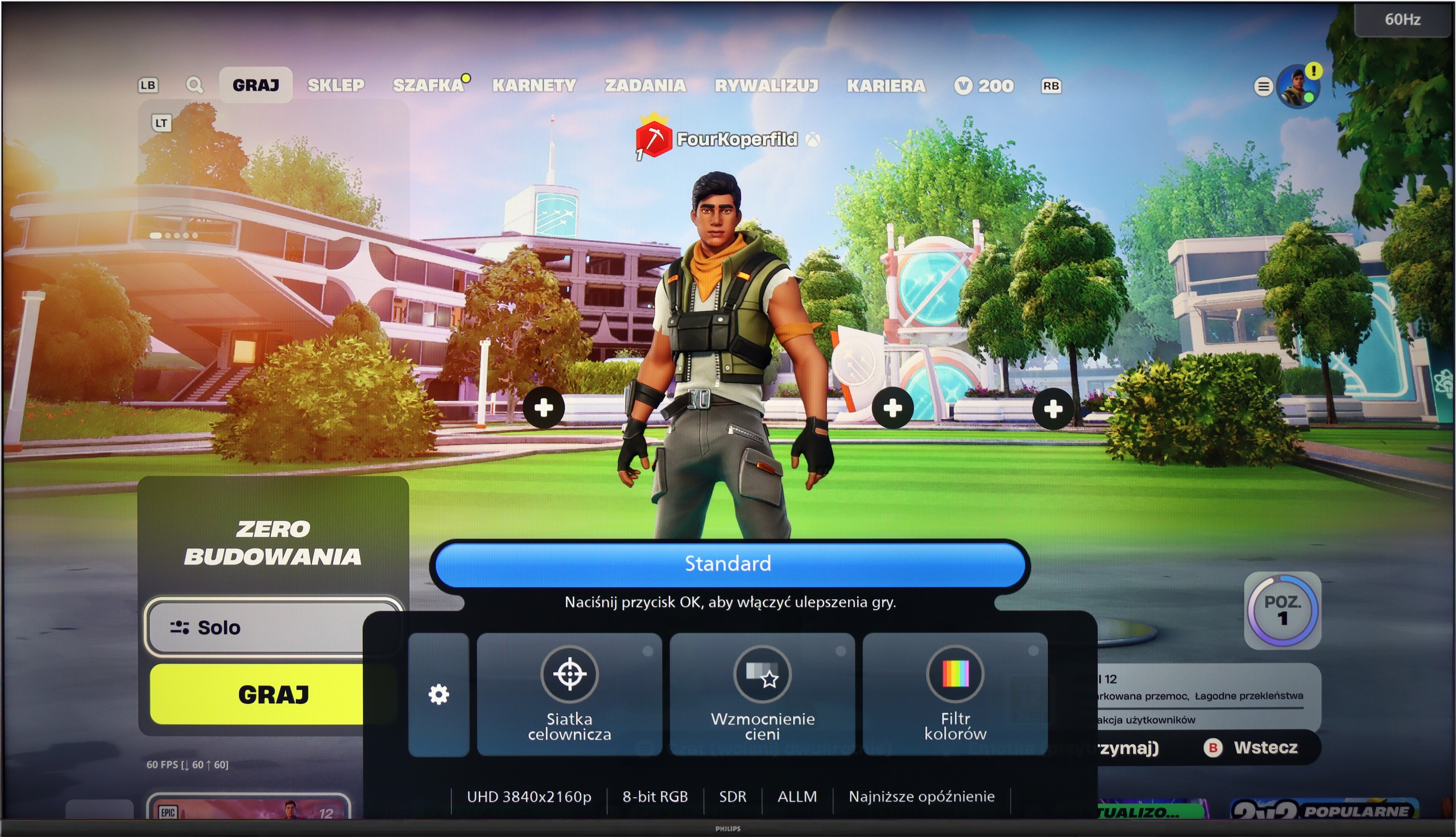

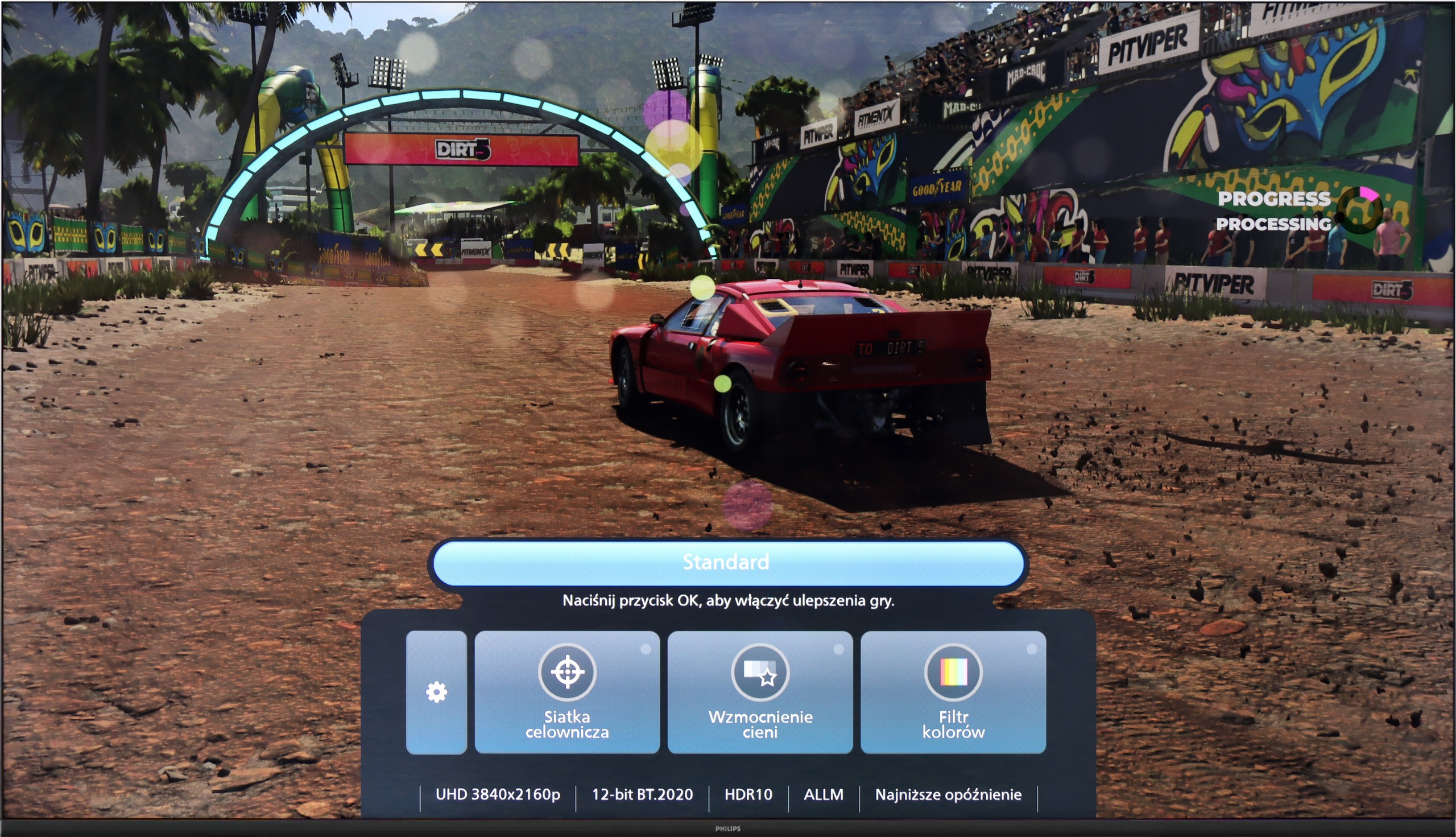
Philips PUS8959 is a television that will certainly satisfy gaming enthusiasts. It supports most modern technologies useful during gameplay, such as HGiG, allowing for better HDR effect reproduction in games. As a result, the image is closer to what the game developers intended to achieve.
The television also supports 120 Hz image display, ensuring smoothness and dynamism, which is particularly important during action games and sports broadcasts. The Game Bar feature provides quick access to game settings, making it easier to adjust the image according to user preferences without interrupting gameplay.
Unfortunately, the Dolby Vision mode does not offer low input lag, which may be noticeable during dynamic scenes. Nevertheless, thanks to the HGiG feature and high refresh rate, the Philips PUS8959 remains an attractive choice for gamers, offering good image quality and appropriate smoothness during gameplay.
Although the Philips PUS8560 is not designed specifically for gamers, the manufacturer decided to equip it with several features that may prove useful when connecting a console. It includes automatic switching to game mode (ALLM), as well as a simple connection status information bar – the so-called Game Bar. While it does not make a particularly strong visual impression, it serves its purpose. The presence of variable refresh rate (VRR), operating in the range of 48 to 60 Hz, might come as a surprise. While this is not a wide range, in the case of less demanding games or titles with unstable fluidity, VRR can help reduce the stuttering effect. However, this is the only element that can be considered above the minimum.
It should be clearly stated that the PUS8560 is not hardware for gamers looking for a responsive screen and full support for modern console features. It lacks HDMI 2.1 ports, the refresh rate is limited to 60 Hz, and the panel's response time is not among the fastest. This model may be suitable at most for casual gamers who want to enjoy the Ambilight system.
Input lag
9.7/10
10/10
SDR
HDR
Dolby Vision
Philips PUS8959 TV offers impressive results in terms of input lag, making it an excellent choice for gamers. For 120 Hz content, the lag is less than 6 ms, which is an absolutely outstanding result and allows for immediate reactions in games, especially in fast-paced titles. For 60 Hz content, the input lag is 15 ms, which is also a remarkable result and provides comfortable gameplay in most cases.
Unfortunately, the Dolby Vision mode does not perform as well, as the input lag increases to 31 ms. While this result may be acceptable for less dynamic content, it may prove insufficient for demanding gamers, affecting precision and reaction speed. Nevertheless, in standard modes, Philips PUS8959 still offers outstanding performance, making it a competitive choice in the gaming TV market.
The input lag on the PUS8560 is very good. When we previously wrote that this screen is more for "casual gamers," there's no shame in this regard – even compared to screens aimed at gamers. Results around 12 ms are truly exceptional, allowing for enjoyable responsive gameplay. It doesn't matter if we are playing in Full HD or 4K – the lag remains just as low, so if you care about quick reaction times, the PUS8560 will definitely not disappoint in this aspect.
Compatibility with PC
8/10
5.6/10

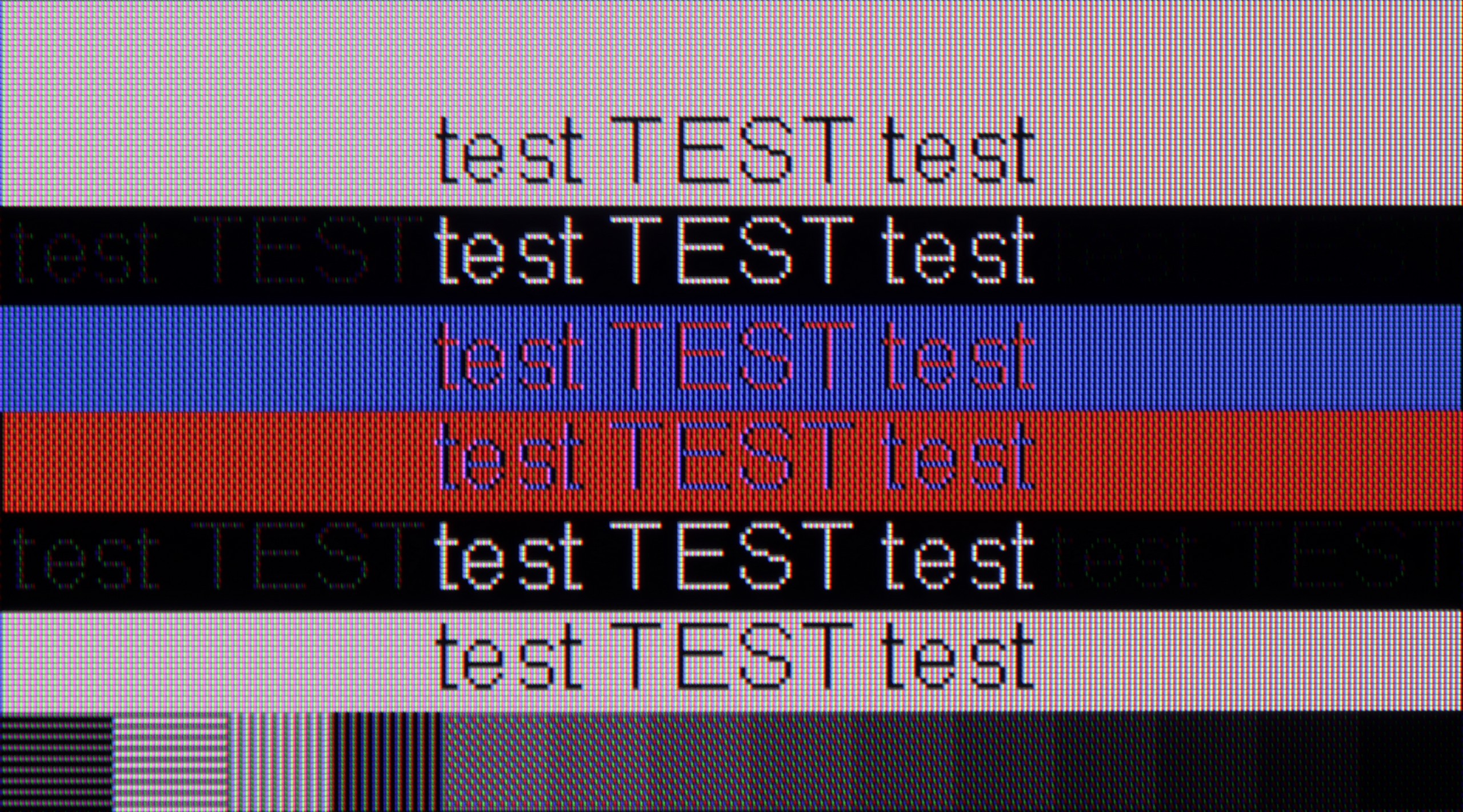
Philips PUS8959 performs excellently as a monitor for use with a PC. With support for chroma 4:4:4, it provides full color clarity, which is crucial for working with text – fonts are sharp and legible, regardless of the background they are on. This makes using office applications, browsing the internet, and graphic editing comfortable and precise.
Additionally, the low input lag offered by the television guarantees smooth and responsive operation, which is important for both everyday tasks and more dynamic applications, such as gaming or multimedia editing. Philips PUS8959 is an excellent choice for users seeking a television that will also serve as a PC monitor, providing high image quality and user convenience.
When it comes to working with a PC on the PUS8560, it looks... quite strange. Chroma 4:4:4 is present in "Monitor" mode, but there is a problem with gray fonts – not all subpixels light up, which makes the text appear pixelated. On the other hand, in "Game" mode, chroma 4:4:4 disappears, but the gray fonts look correct. In practice, we are therefore forced to juggle settings if we want to have perfectly readable text all the time. And what about gaming on the computer? Our opinion remains the same as regarding consoles – it's doable, but without any fireworks. There is no variable refresh rate for G-SYNC graphics cards, and the refresh rate itself remains relatively low. On the plus side, we can again highlight the very low input lag, which saves the day in fast-paced games.
Viewing angles
6.9/10
3.3/10
Philips PUS8959, equipped with an ADS panel, offers quite good viewing angles, definitely better than those found in VA panels. The image retains its quality even when viewed from a greater angle – colors are vivid, and contrast does not deteriorate as much as in televisions with VA panels. As a result, when watching television from different spots in the room, one can still enjoy well-saturated colors and overall image quality, making Philips PUS8959 a perfect choice for larger spaces and for watching together with family or friends.
The viewing angles on the PUS8560 are exactly what you would expect from a VA panel - they don't perform the best. The image loses quality even with a slight shift off-axis – colors become washed out, and the black starts to resemble a dark navy. This is, of course, the price paid for the better contrast that VA offers directly. In the case of our 55-inch unit, it is still acceptable, especially if the TV is perfectly positioned in front of the couch. But with larger screen sizes or a less central placement in the living room – it could be a problem for comfortable viewing.
TV efficiency during daytime
6.1/10
4.9/10

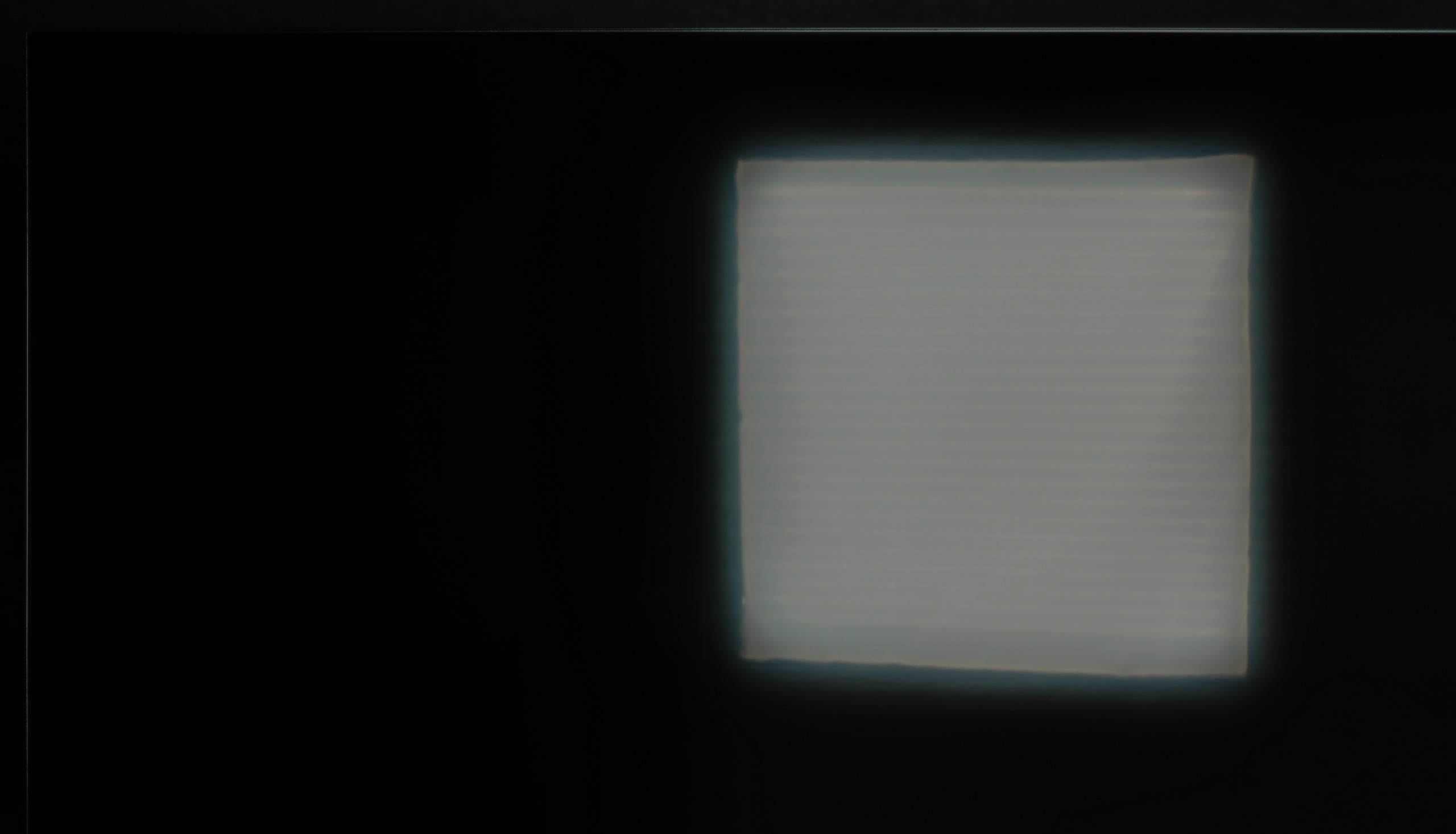

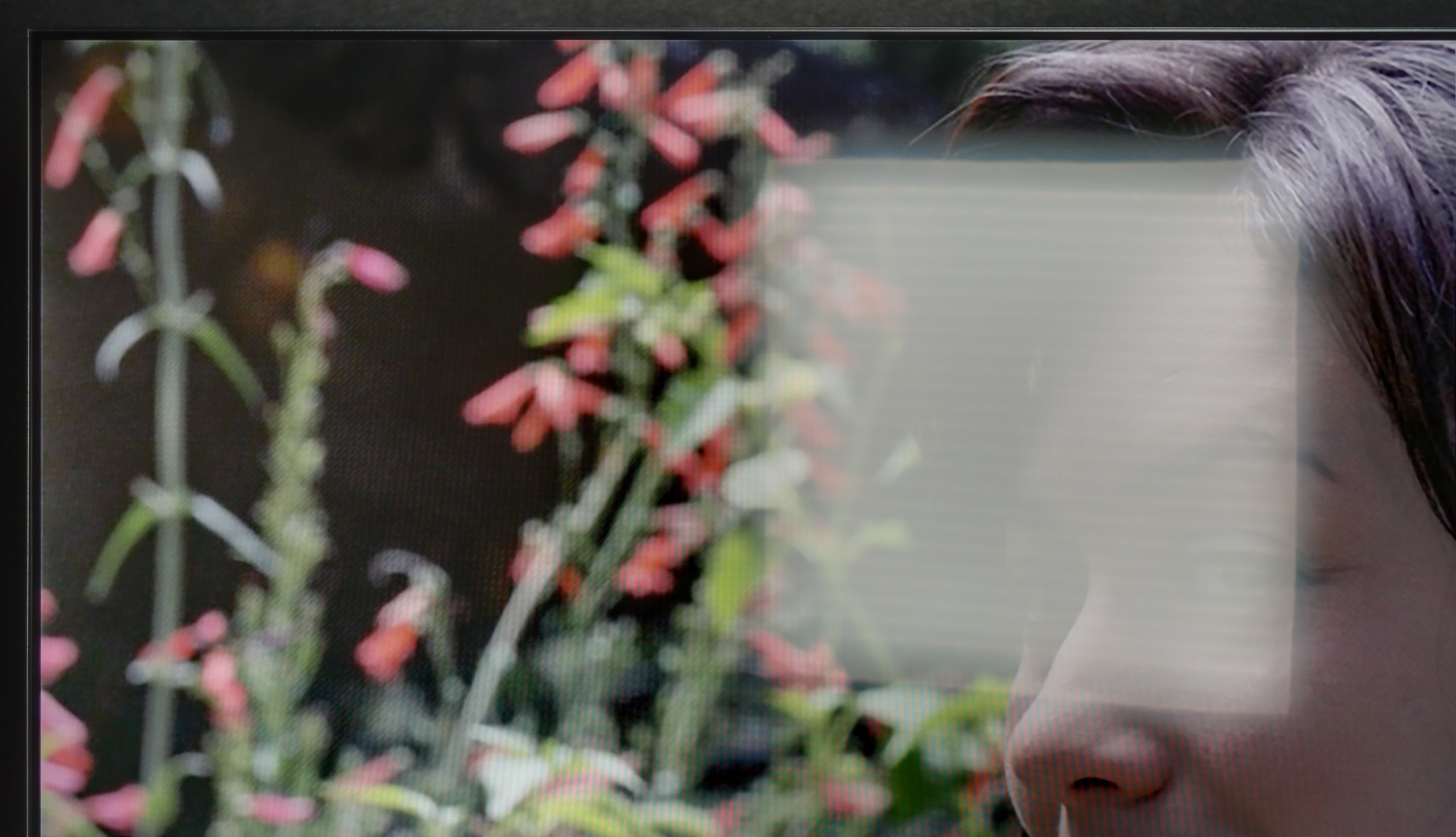
Matrix brightness
Average luminance SDR
Philips PUS8500 : 331 cd/m2
Philips The One (PUS8959 / PUS8919 / PUS8909 / PUS8949: 562 cd/m2
Philips PUS8959 has a satin coating on the screen that effectively reduces light reflections, which is advantageous when using the television in bright daylight conditions. However, such a coating causes blacks to take on shades of gray during the day, losing their depth and intensity, which affects the perception of the image in darker scenes.
A brightness level of 562 cd/m² allows for comfortable television viewing during the day, even in well-lit rooms. The image is bright enough to stand out against daylight, and the reduction of reflections ensures decent visibility of content, making Philips PUS8959 a good choice for rooms where lighting levels cannot always be controlled.
PUS8560 performs moderately during the day. The satin finish of the panel effectively reduces reflections, so light from the window or lamp doesn't interfere too much. The black also looks decent for a VA panel – even in daylight, there are no significant losses in contrast. But the charm fades when it gets really bright. The panel's brightness is around 300 nits, which is definitely too little to speak of full comfort in a brightly lit room. In such conditions, the PUS8560 simply needs to be supported by curtains – otherwise, the picture starts to look quite pale.
Details about the matrix
Subpixel Structure:

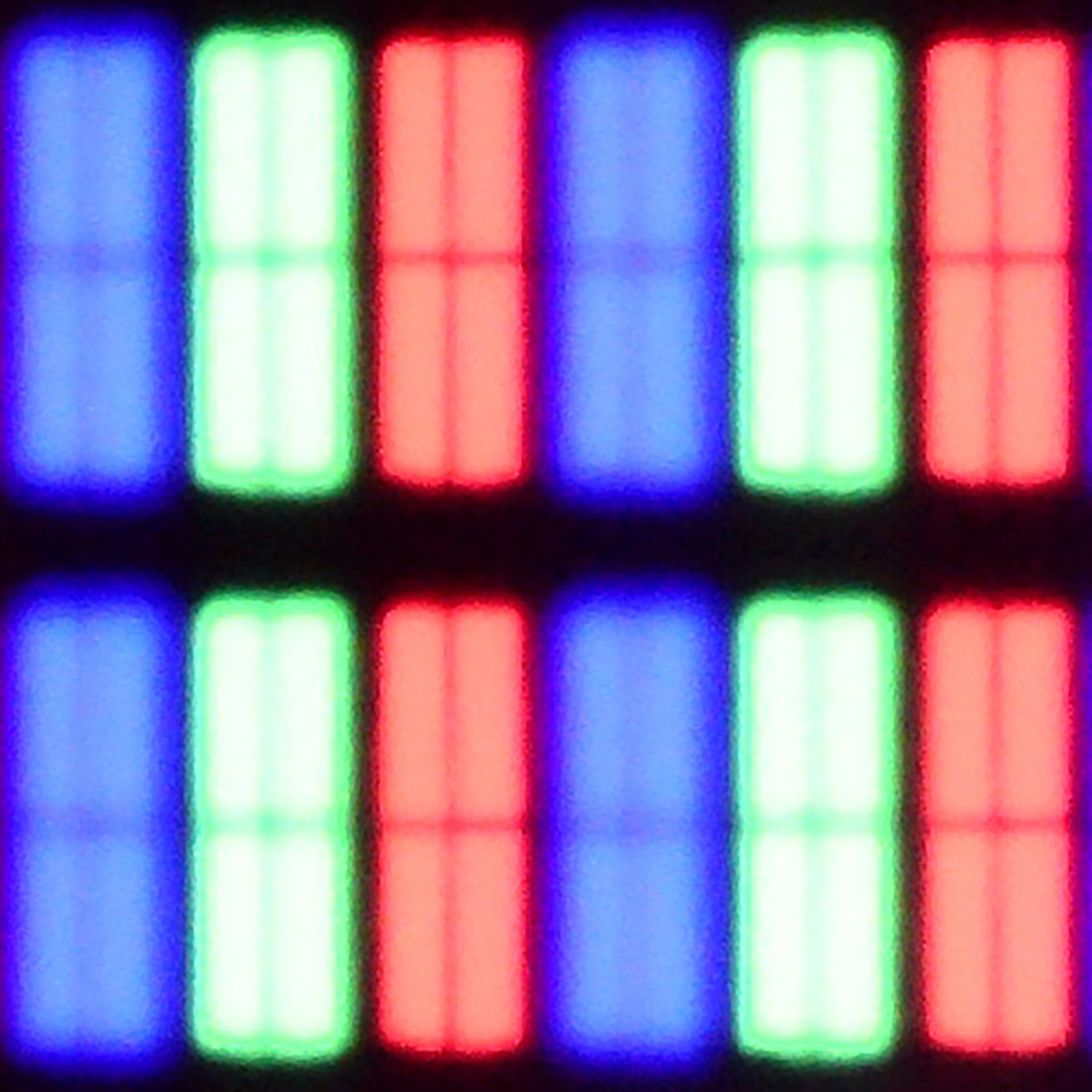
Panel uniformity:


Philips The One (PUS8959 / PUS8919 / PUS8909 / PUS8949
Philips PUS8500
TV features
6/10
4.8/10
- HDMI inputs0 x HDMI 2.0, 0 x HDMI 2.1 48Gbps3 x HDMI 2.0, 0 x HDMI 2.1
- OutputsToslink (Optical audio), eARC (HDMI), ARC (HDMI), Mini-Jack (Headphones)Toslink (Optical audio), eARC (HDMI), ARC (HDMI), Mini-Jack (Headphones)
- Network InterfacesWi-Fi 2.4GHz, Wi-Fi 5GHz, Ethernet (LAN) 100MbpsWi-Fi 2.4GHz, Wi-Fi 5GHz, Ethernet (LAN) 100Mbps
- TV receptionDVB-T, DVB-T2, DVB-S, DVB-S2, DVB-CDVB-T, DVB-T2, DVB-S, DVB-S2, DVB-C
Classic features:
- Recording to USB (terrestrial TV)
- Recording programming
- Picture in Picture (PiP)
- RF remote control (no need to aim at the screen)
- Backlit remote control
- Teletext
- Audio only mode
- Possibility to connect Bluetooth headphones to the TV
- Possibility to simultaneously use Bluetooth headphones and the TV speaker
Smart features:
- AirPlay
- Screen mirroring (Windows Miracast)
- Wyszukiwanie głosowe
- Voice search in native language
- Ability to connect a keyboard and mouse



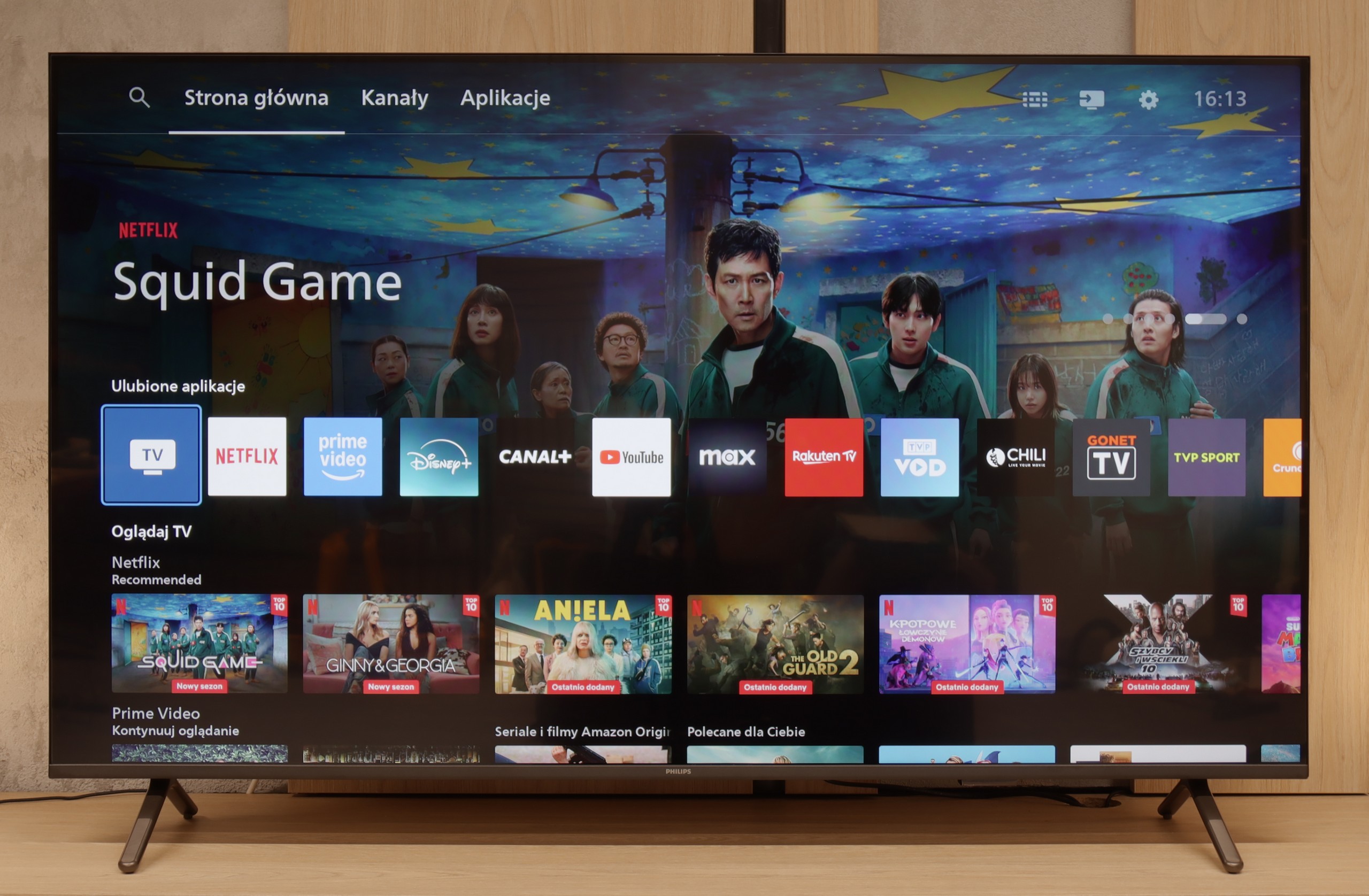
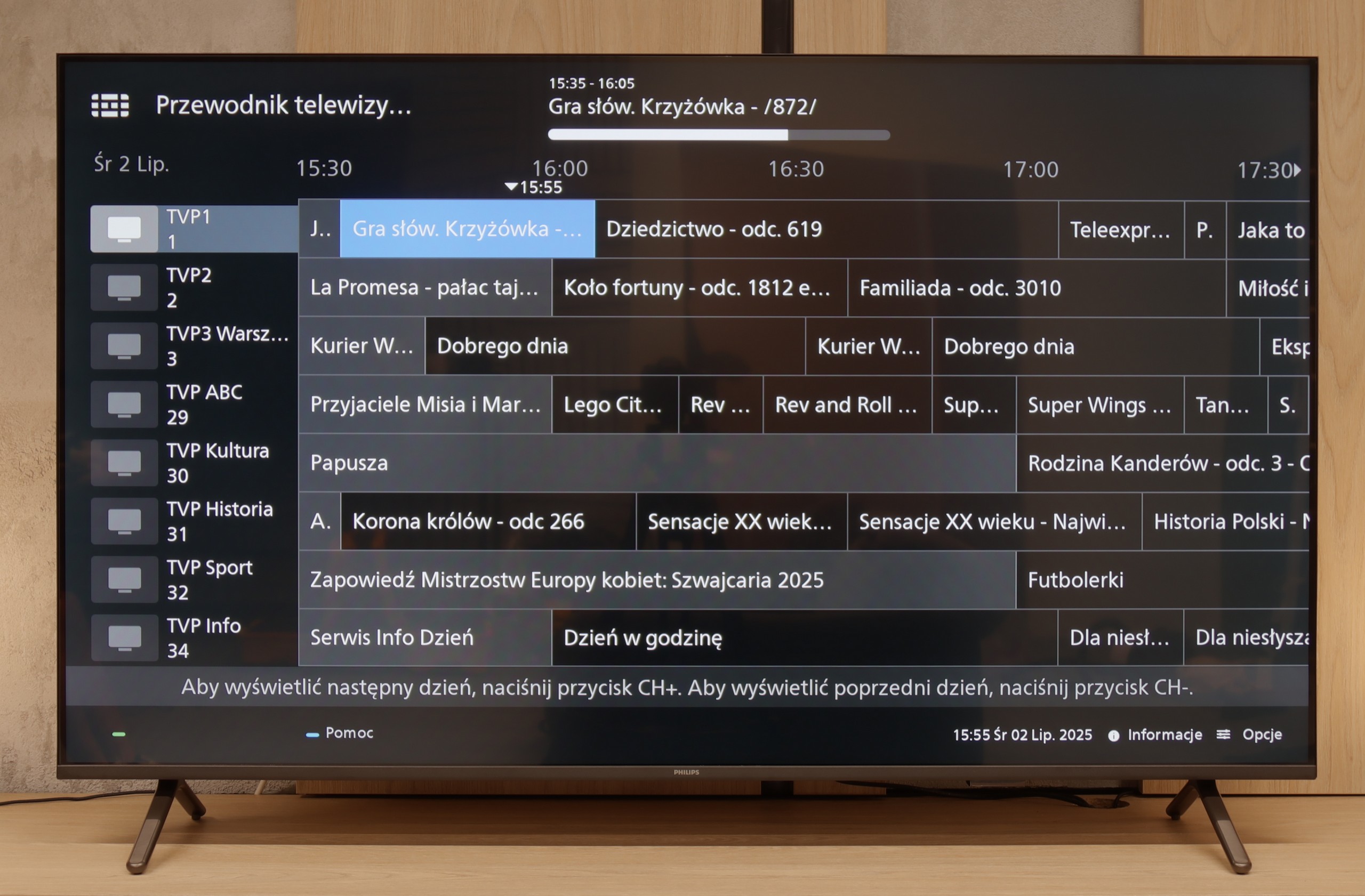
Philips PUS8959 is equipped with a three-sided Ambilight system – the flagship patent of this brand, which has delighted a dedicated group of fans for years. Ambilight relies on dynamic backlighting of the wall behind the TV, matching the content displayed on the screen, which significantly enhances the viewing experience, especially in dimly lit rooms. This effect is unique and adds a certain kind of "magic" to watching, causing many users to choose Philips specifically for this feature.
As for the operating system, Philips PUS8959 uses Titan OS – a system that is still in its early stages of development. Here, you can see growing pains, especially since Philips has moved away from Android in most of its models. Titan OS has a limited number of available apps. This is frustrating for those accustomed to a broader ecosystem like GoogleTV. Additionally, the TV does not have AirPlay functionality, which limits its compatibility with Apple devices and may be a drawback for users looking for a flexible way to stream content.
The user features of Philips PUS8959 are a mix of pros and cons. The remote control included with the TV is quite annoying – it requires direct aiming at the screen, which can be inconvenient. On the other hand, the voice function works without the need to aim, but it only supports English. On the plus side, the remote is backlit, making it easier to use in the dark. The TV does not have PiP (Picture-in-Picture) functionality or the ability to record programs, which is a significant drawback. However, the TV is equipped with Bluetooth, allowing connection to headphones or a keyboard, which can be useful – especially due to the limited number of available apps, which may encourage the use of the built-in web browser.
Classic TV Features:
If you are looking for a TV that "works" in the basic sense – the PUS8560 will serve that purpose. In terms of classic features, we have a rather minimalist set. On the plus side, it includes an electronic program guide (EPG), teletext, a backlit remote control with a classic numeric keypad, and a headphone jack. It sounds a bit like a dream set for seniors – and there is some truth to that. However, it must be said clearly: this is a TV with very limited capabilities. We won't find features for recording from DVB tuners to USB, nor is there a PiP mode or other conveniences known from more expensive models.
Smart TV:
How does SmartTV fare on the PUS8560? Well, this is where it gets a bit tricky. The PUS8560 runs on the Titan OS, which in this particular implementation caused significant problems. Some features, while present "on paper," simply did not work. For example: Wireless screen mirroring features like Chromecast or Miracast – we tried to activate them with several different phones and laptops… without success. Perhaps this will be fixed in the future, but at the time of testing – it did not work. Additionally, the system's speed left much to be desired – switching between apps or home screens was simply slow. A significant portion of the features in the menu feels heavily hidden in the depths of a poorly organized system. To make matters worse, the library of available applications is quite limited. While the situation with apps is better than last year, it is still far from ideal. The situation is somewhat saved by the modern remote – slim, elegant, and superbly made with a really great backlight. Unfortunately, it operates on classic infrared, so you have to point it at the screen. The only exception is the voice control, which works via Bluetooth… it's just a shame that it doesn't support Polish.
Playing files from USB
8.2/10
8/10
Supported photo formats:
Maximum photo resolution:

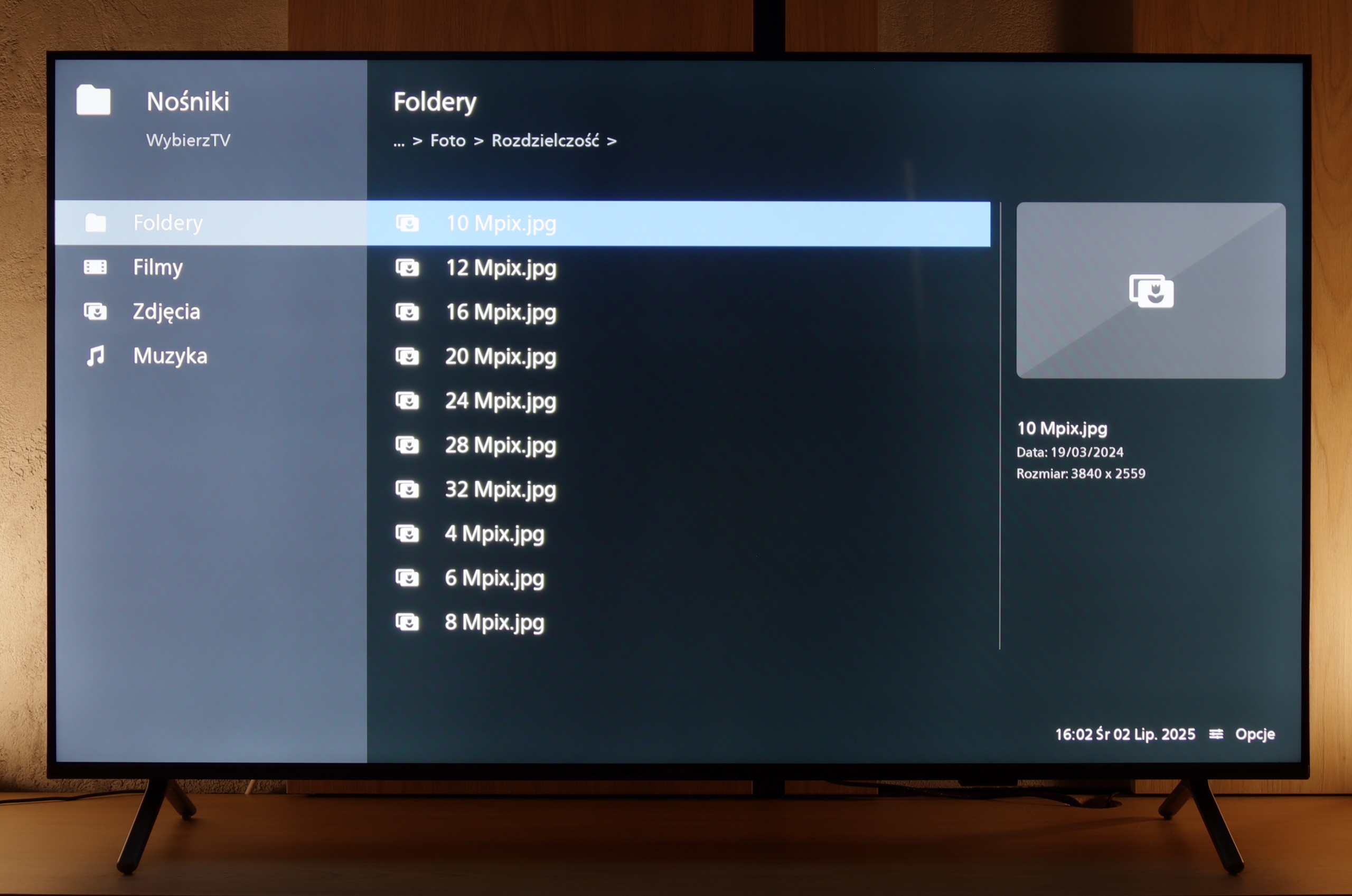
Although the Titan OS system on the Philips PUS8959 TV is still in its infancy, it deserves praise for supporting Polish subtitles embedded in movies, which is a significant convenience for users dealing with external files. If we want to play a movie from a connected USB device, the TV will do so without major issues, providing comfortable viewing without the need for additional subtitle configuration.
When it comes to photos, the TV should have no significant difficulties in playing them. It supports most popular formats, although it lacks support for less common standards such as HEIC used in Apple devices. This means that some photos, especially from newer Apple devices, may require prior conversion to a more standard format in order to be played on the Philips screen.
PUS8560 handles playback of most popular video and audio formats from USB memory without any major issues, so there's no point in detailing the compatibilities individually. In daily use, it should just work – and it does. The only thing worth noting is the way it handles photos. Although the television easily recognizes common file extensions, with very high resolution graphic files, some photos may simply not display. This is not a huge problem, but it's good to keep it in mind, especially if we want to view photographs directly from the camera. Aside from that, PUS8560 shouldn't have any major problems with playback of files from USB.
Apps
6.2/10
4.6/10














































Sound
6.4/10
6.2/10
- Subjective sound quality:6.4/106.2/10
- Dolby Digital Plus 7.1:
- Dolby True HD 7.1:
- Dolby Atmos in Dolby Digital Plus (JOC):
- Dolby Atmos in Dolby True HD:
- DTS:X in DTS-HD MA:
- DTS-HD Master Audio:
The sound of the Philips PUS8959 unfortunately leaves a lot to be desired. Although the low frequencies can be heard in the playback, the bass is very weak, which results in an overall unsatisfactory sound quality. The TV plays average, especially when compared to more advanced audio systems available on the market.
Despite the average quality of the speakers, the TV supports all the essential audio codecs, which may please users using external home theater systems. Thanks to compatibility with various audio formats, the Philips PUS8959 can offer good audio experiences when connected to appropriate external speakers or a receiver, providing a fuller, more cinematic sound.
The TV sounds quite pleasant and it can confidently be stated that the sound level will be fully sufficient for most users – both for watching everyday programs and for an evening session with a series. Moreover, a nice surprise is that even in such an affordable series, Philips has decided to acquire licenses for full audio formats such as Dolby Atmos and DTS. This is great news for home theater and soundbar owners, as it means full compatibility and no need to "fiddle around" with connecting external devices.


